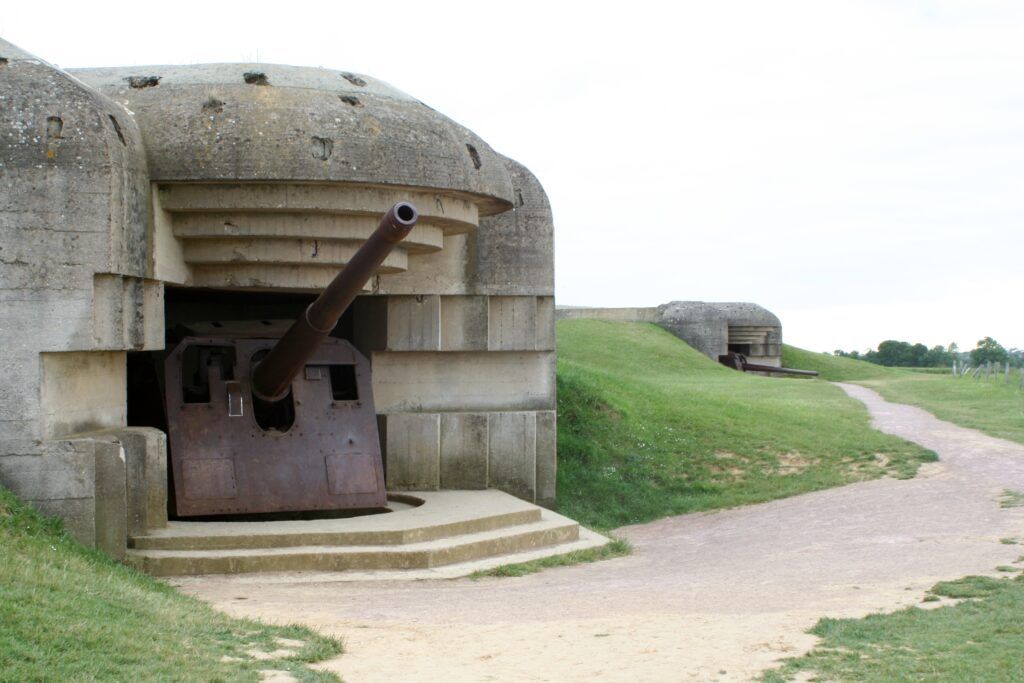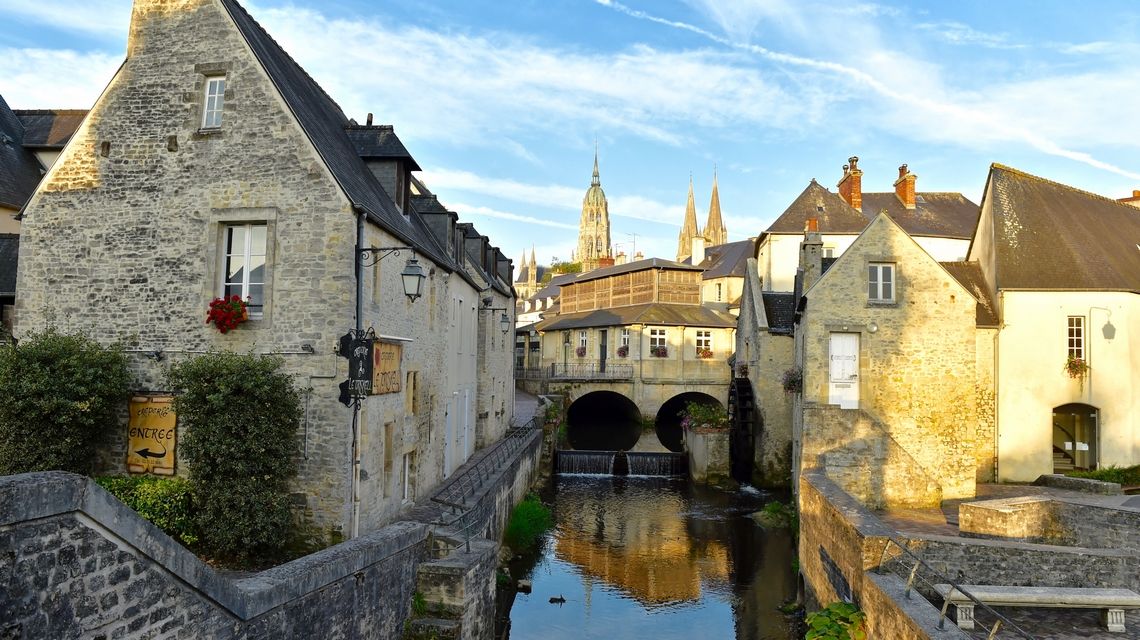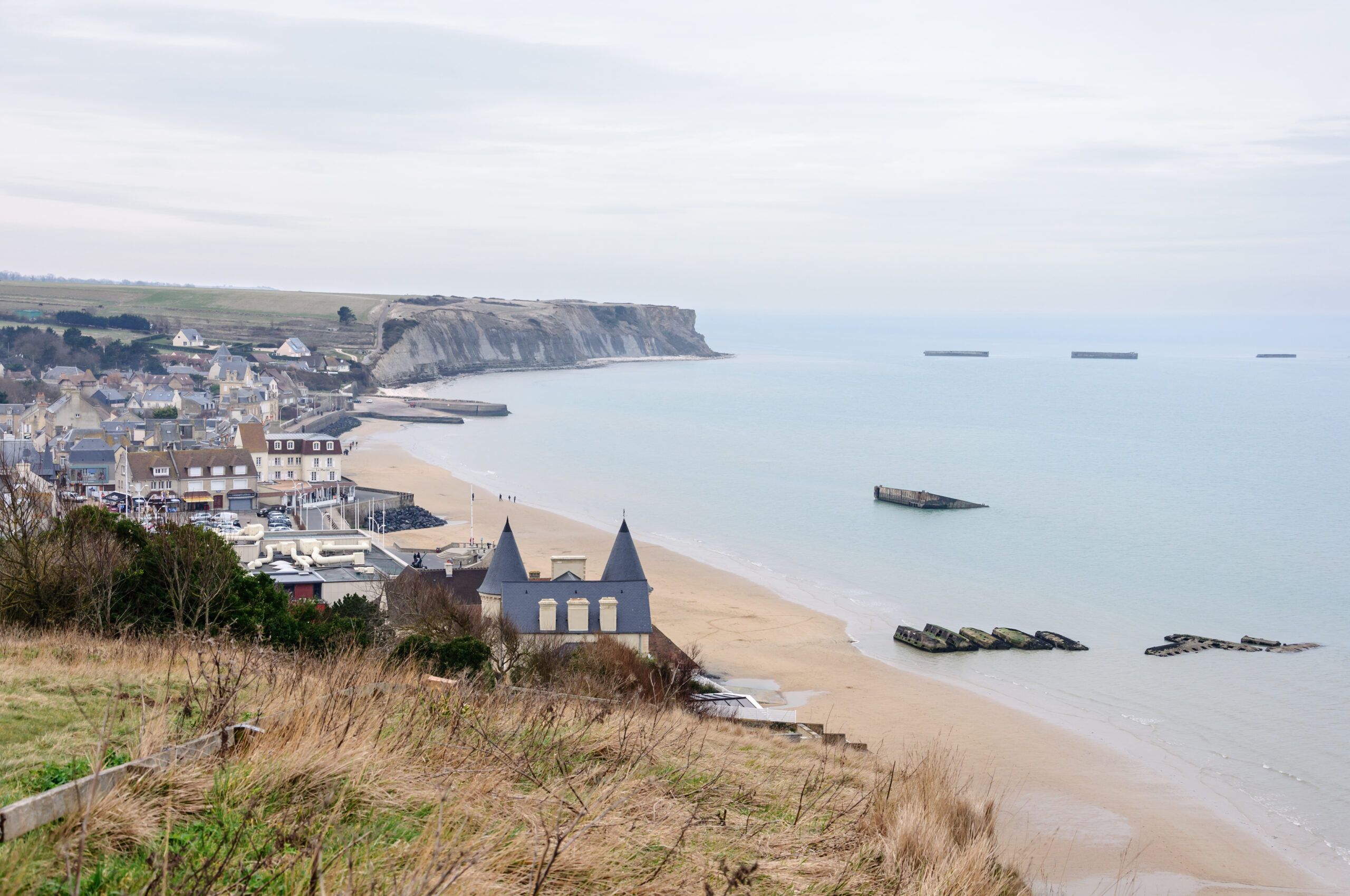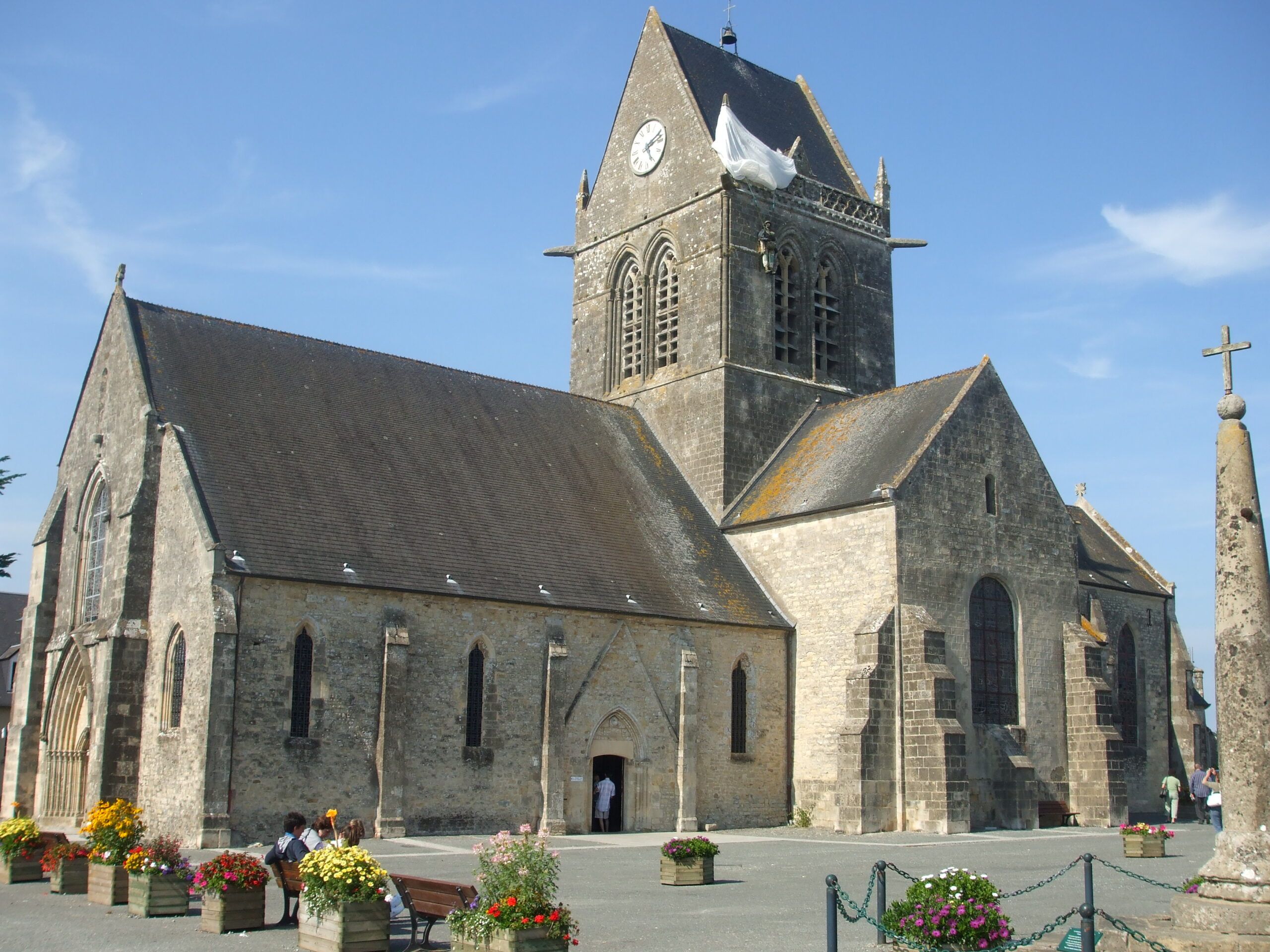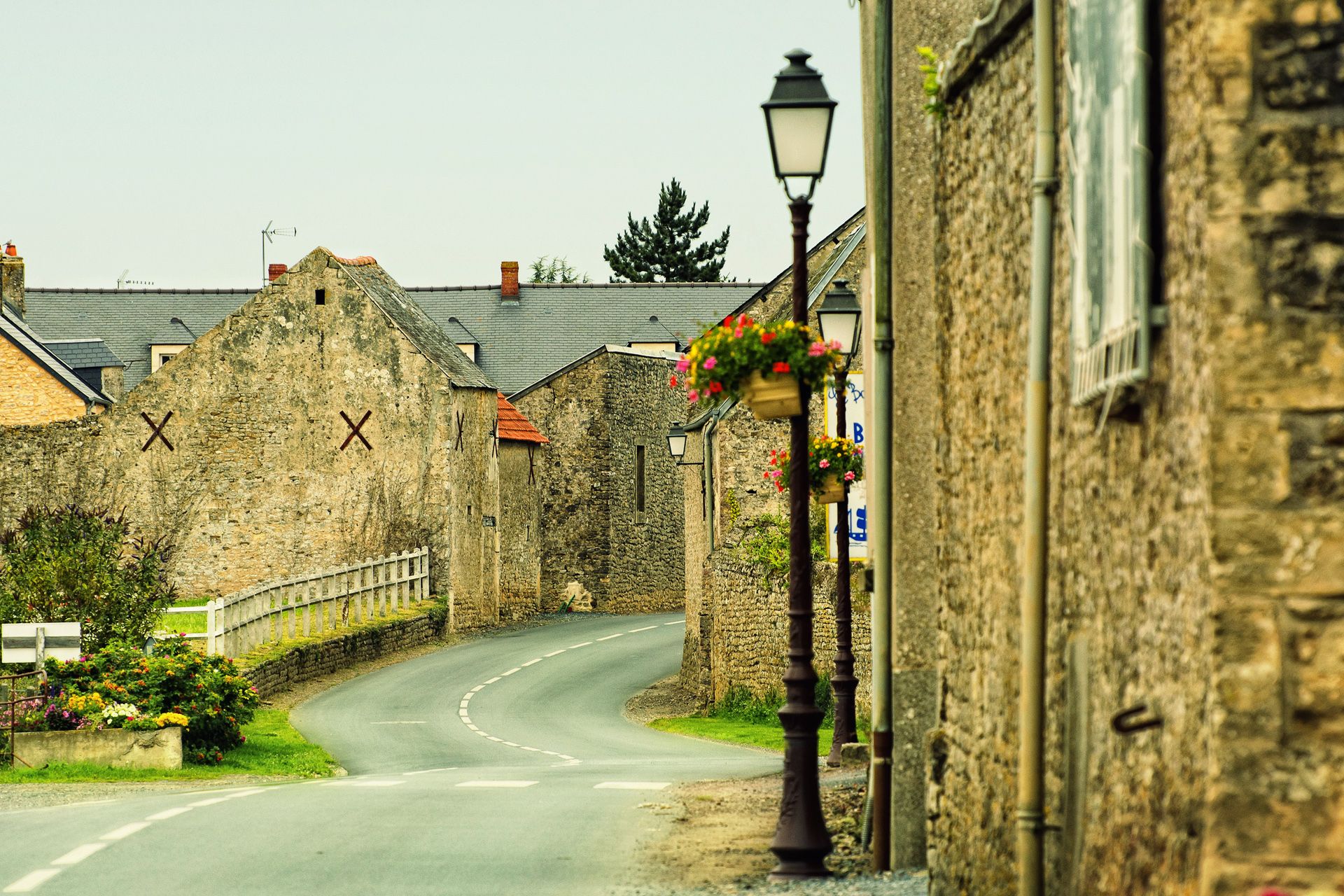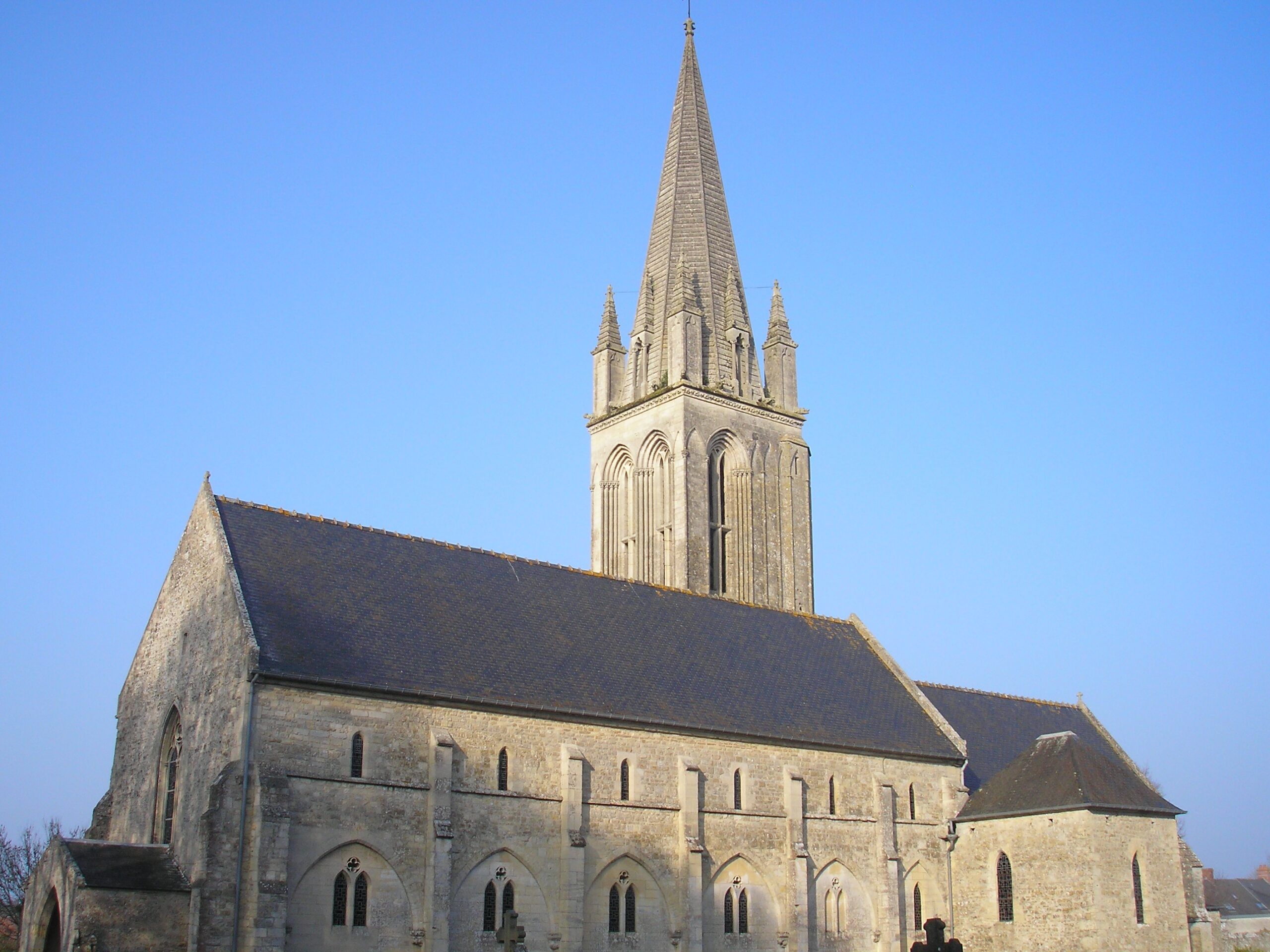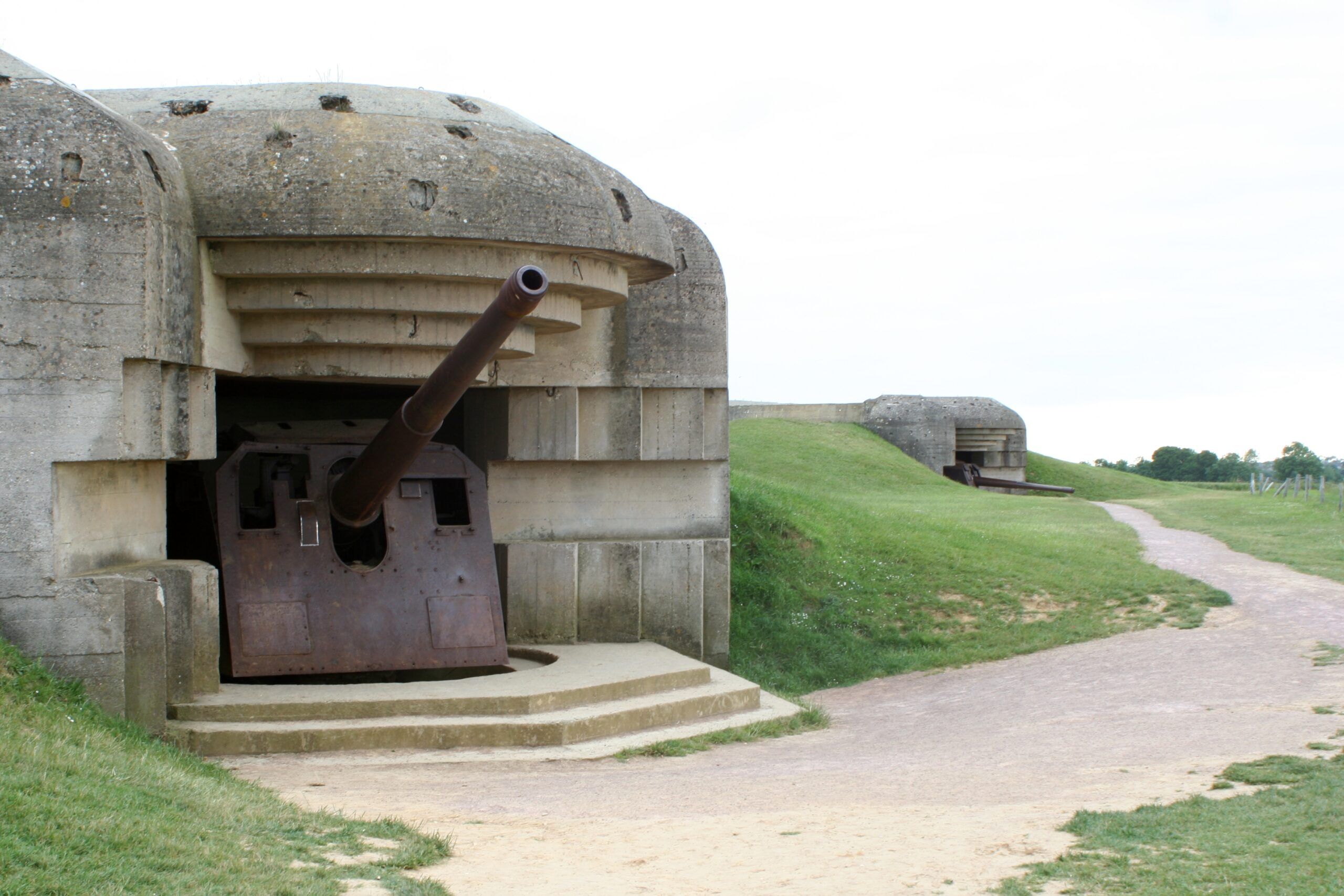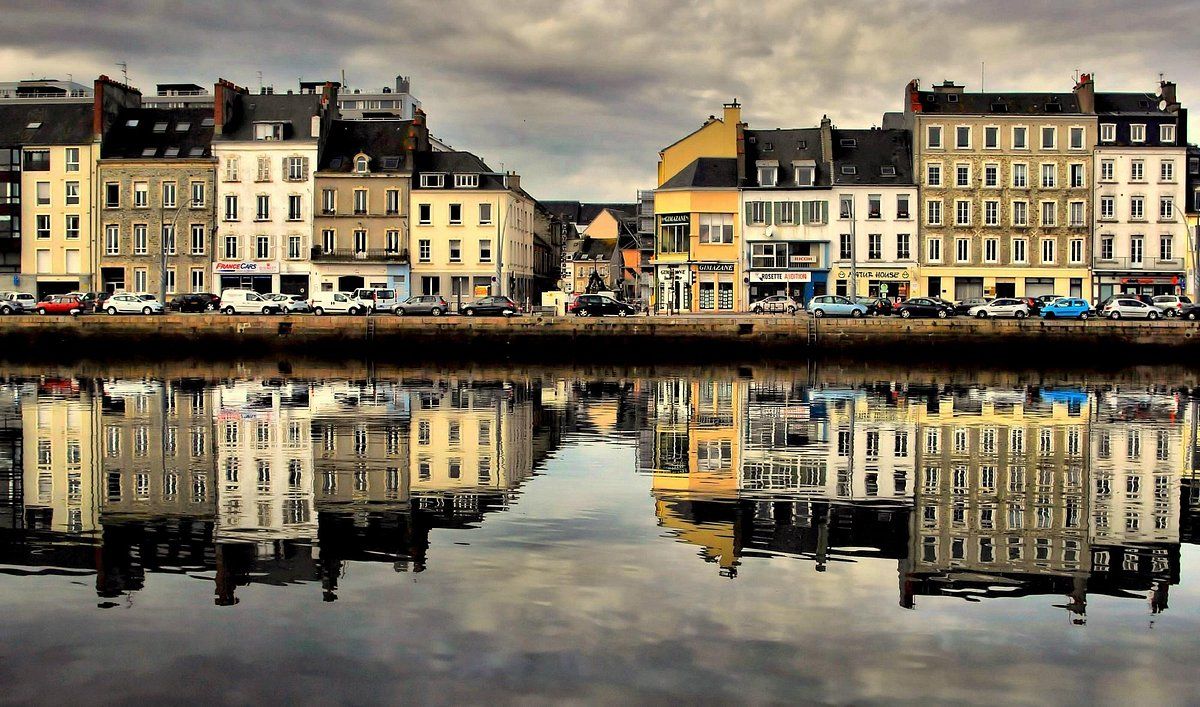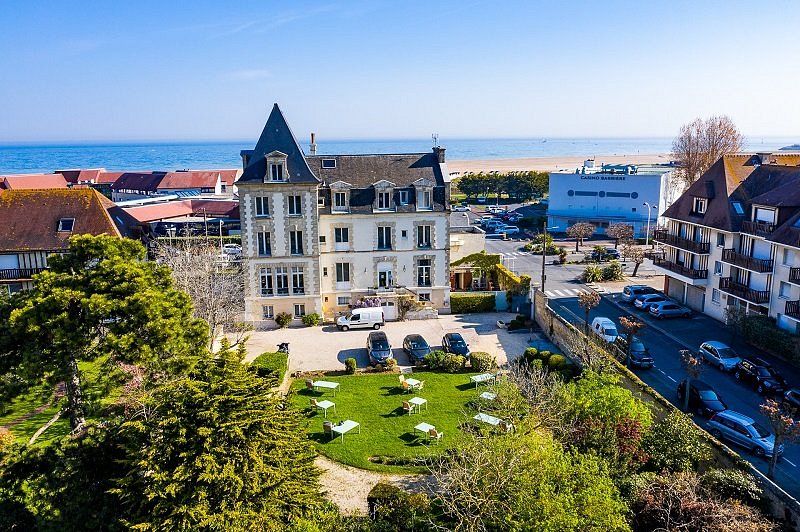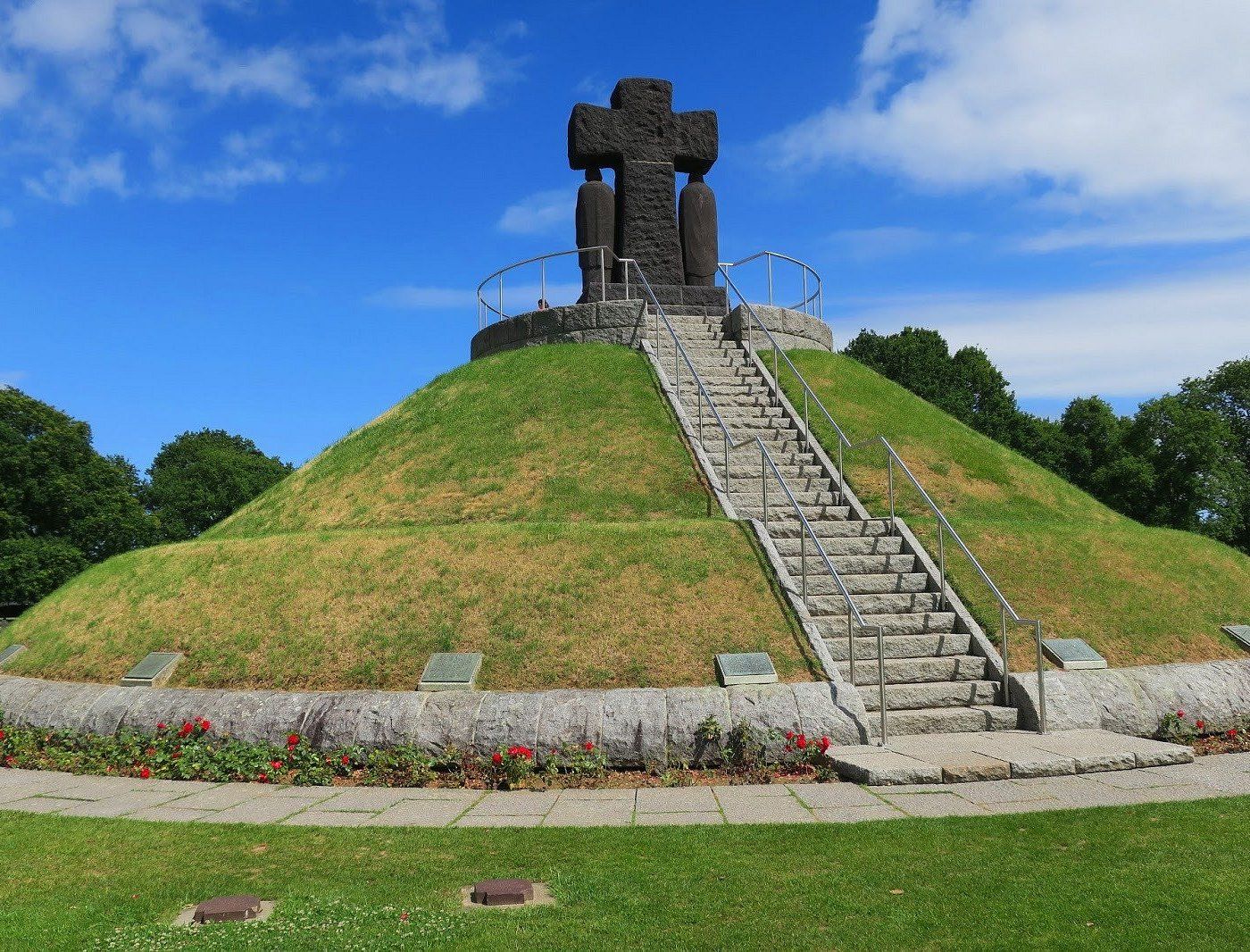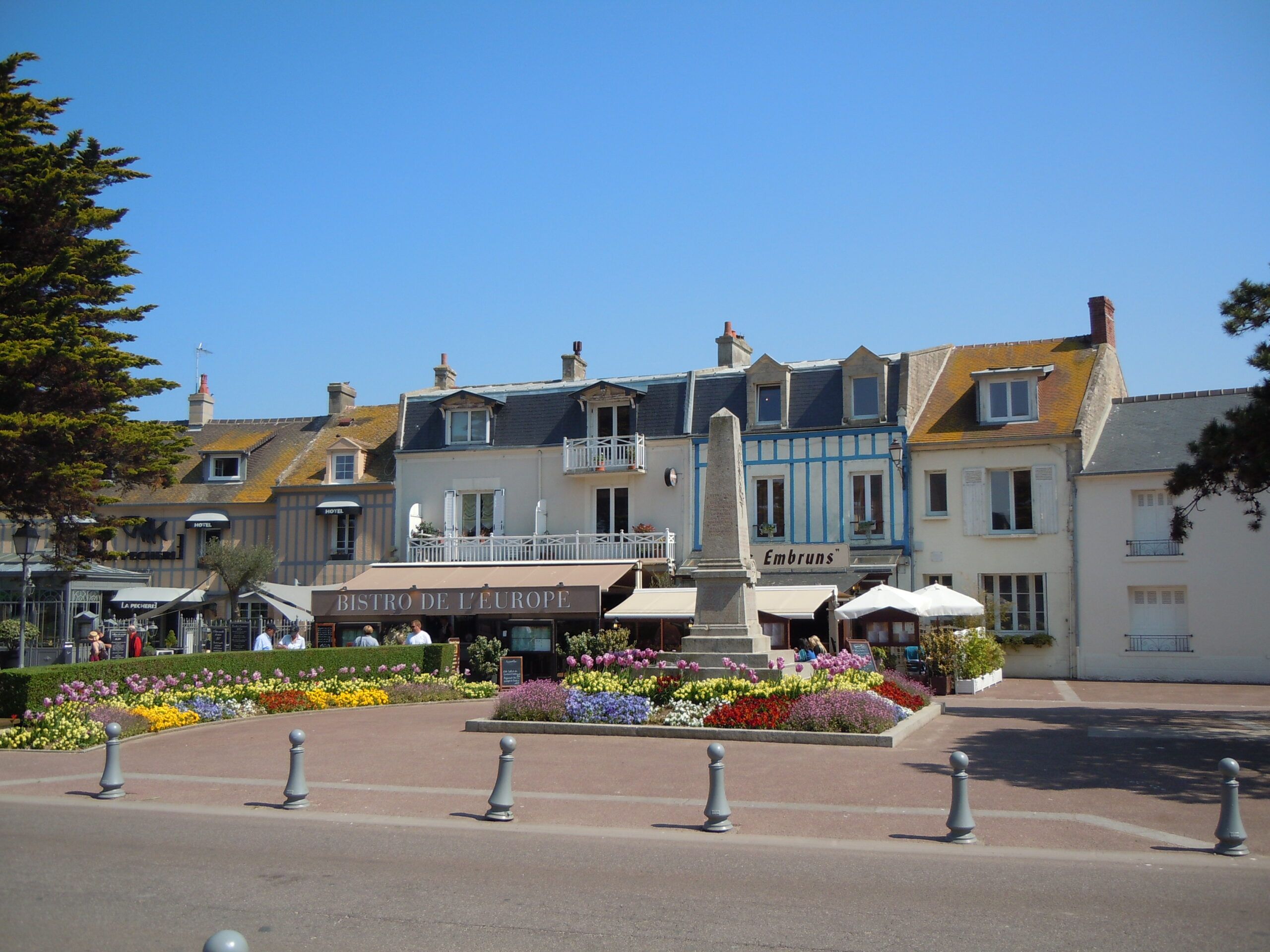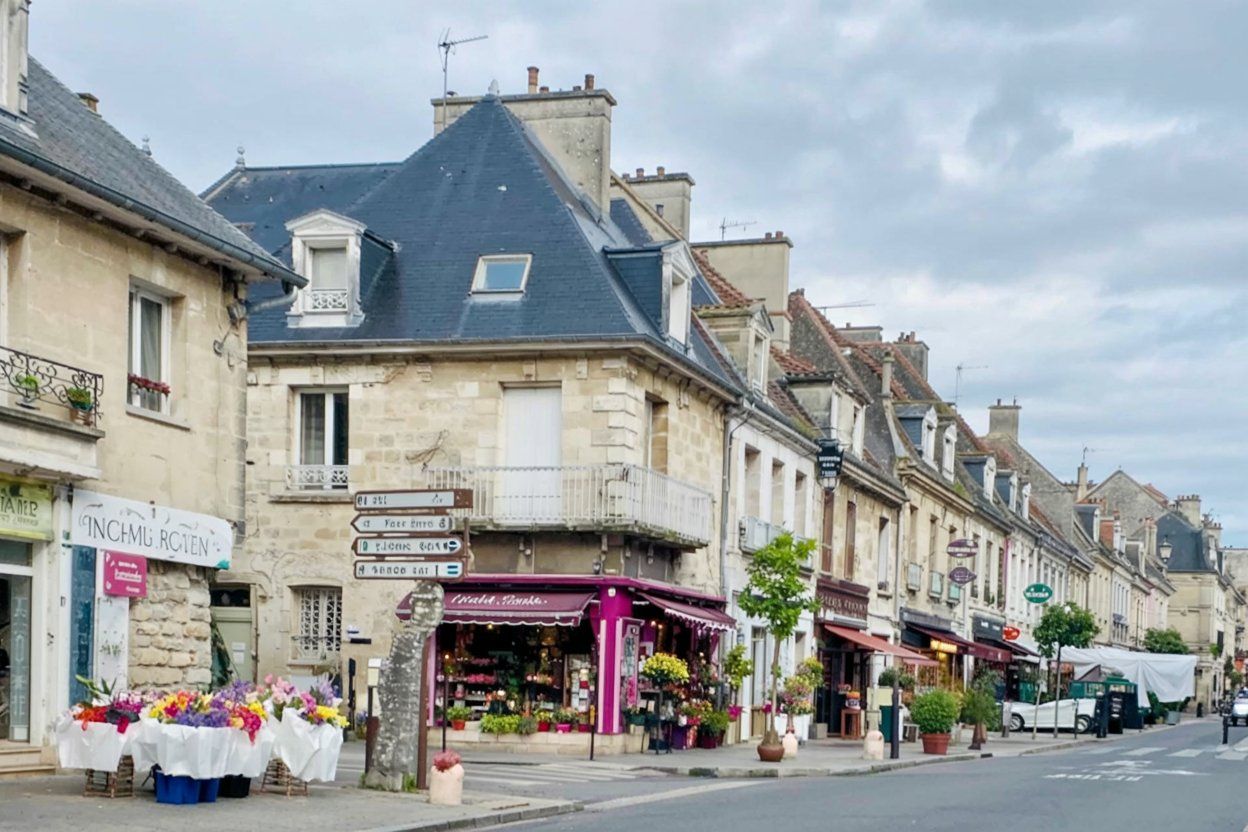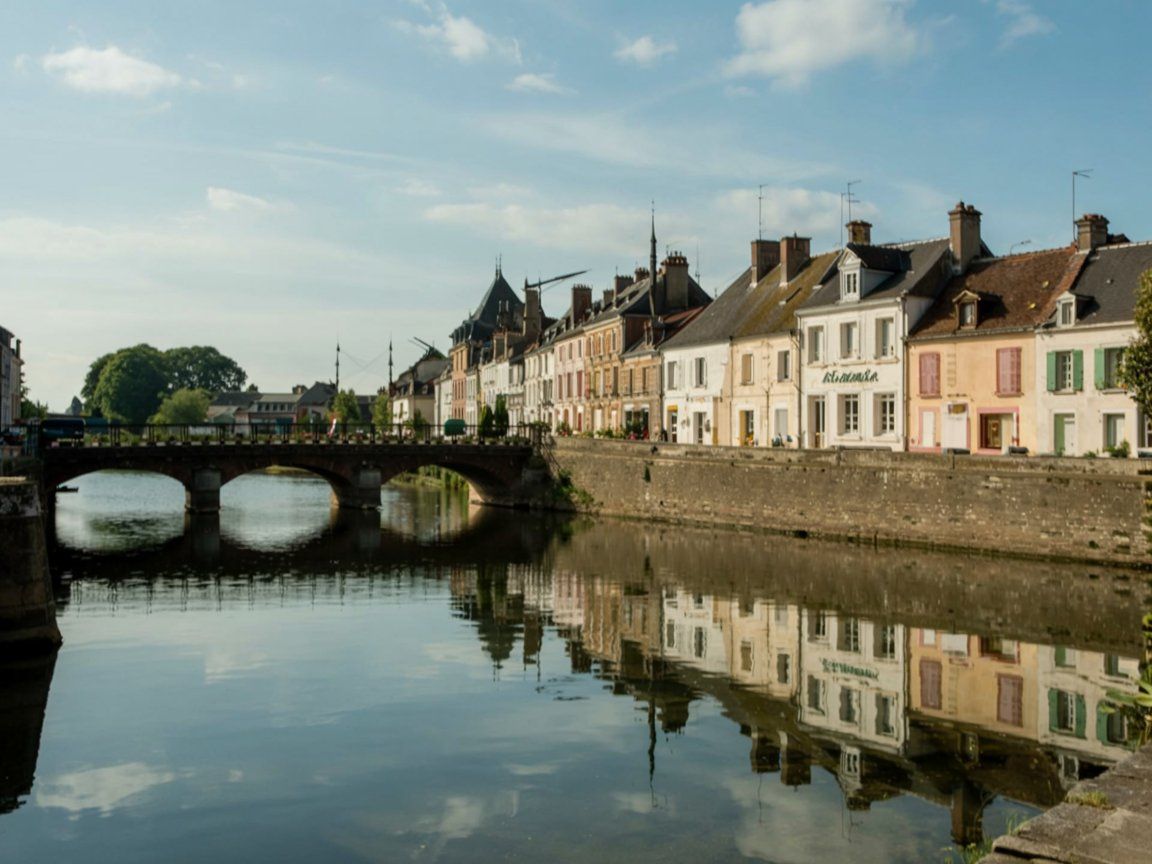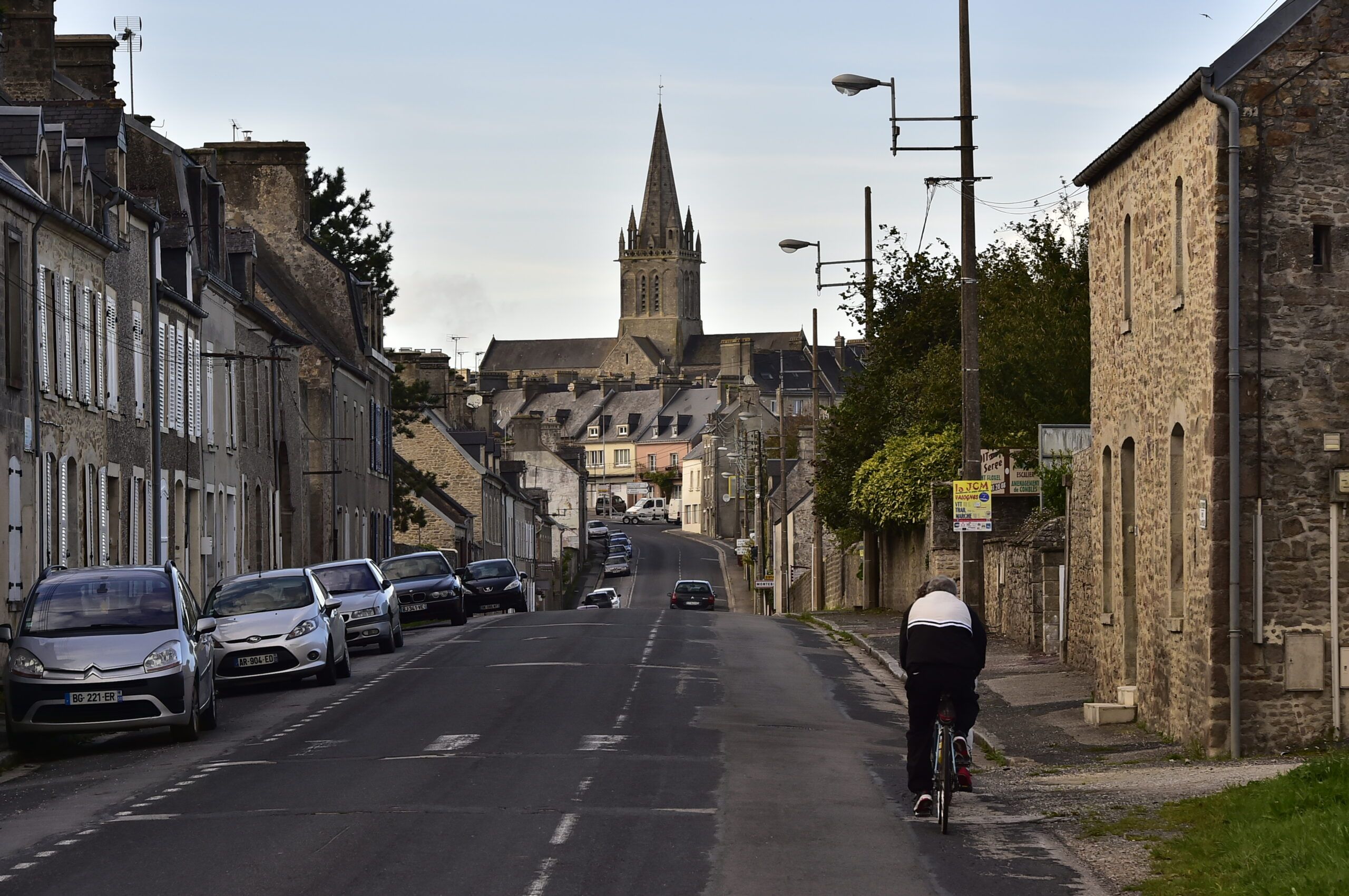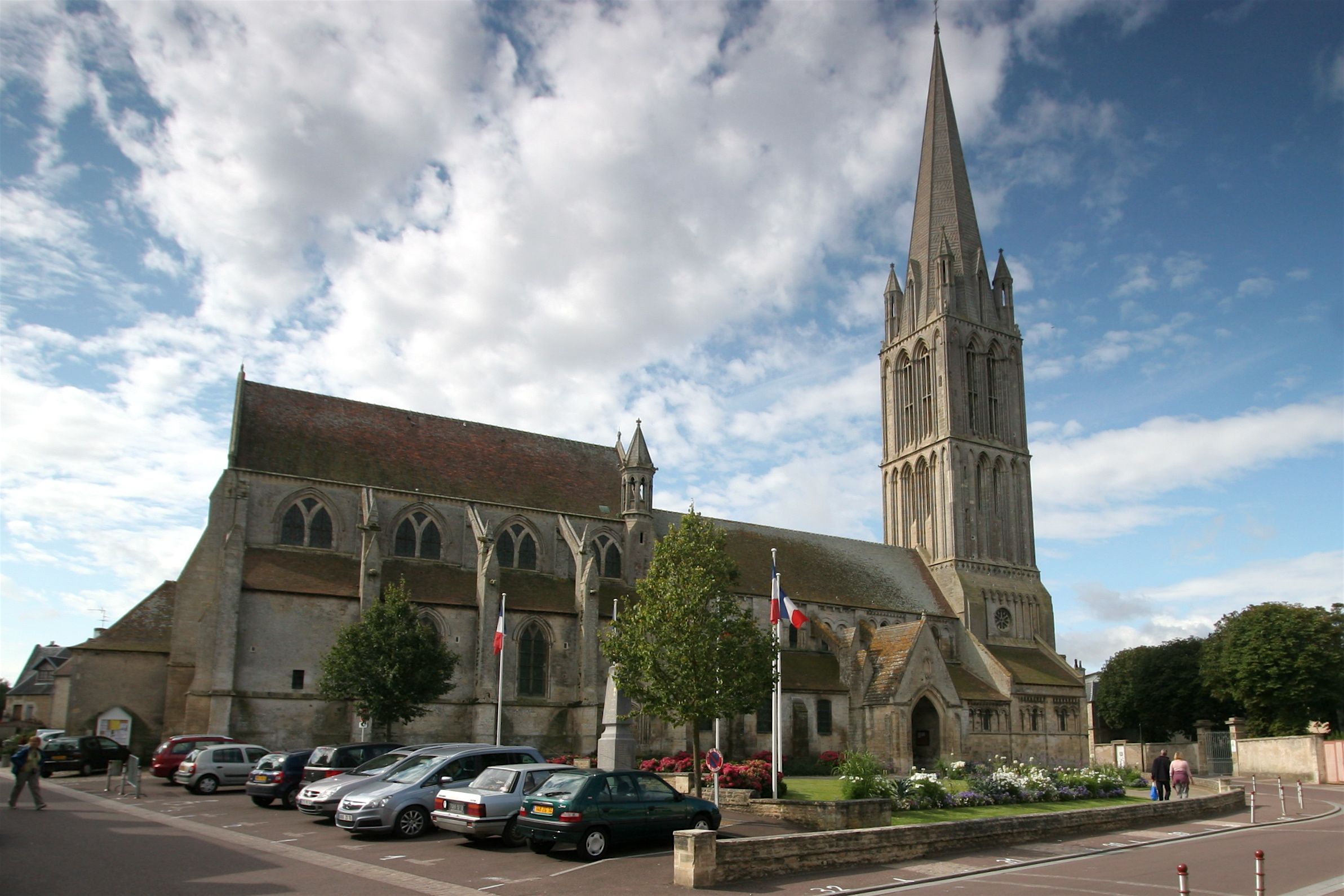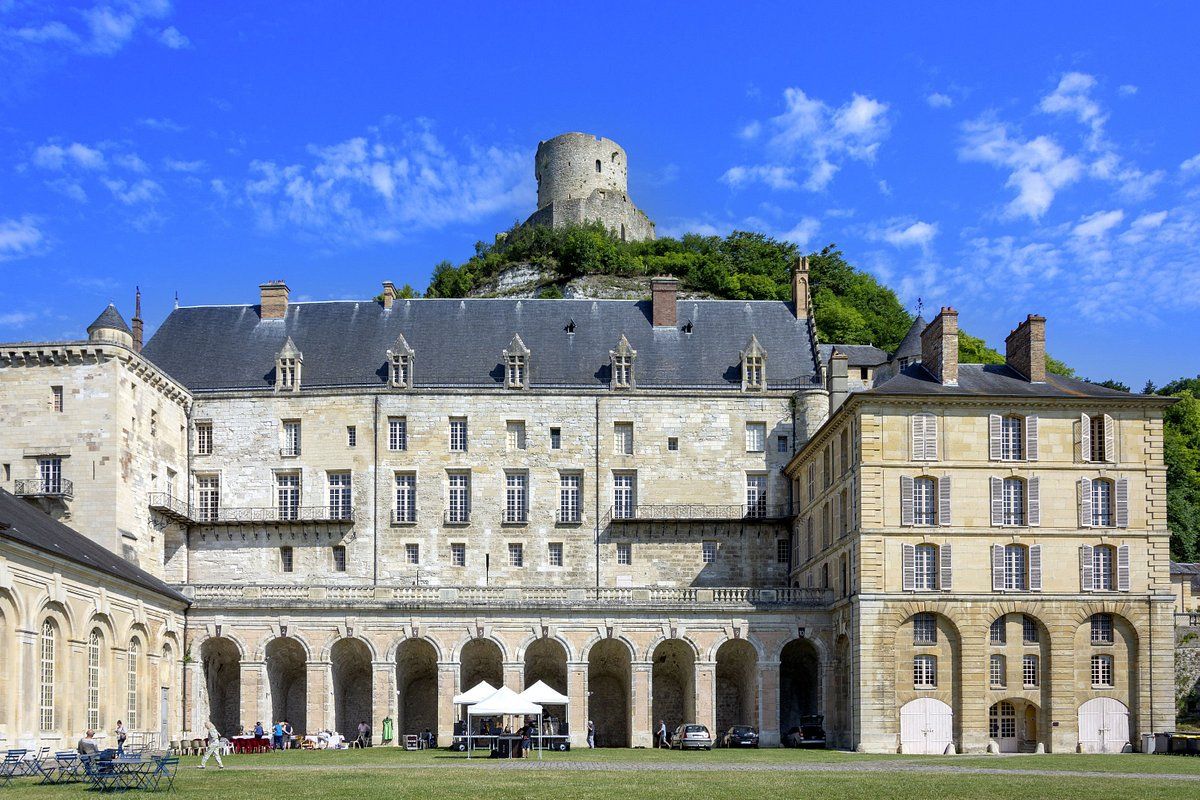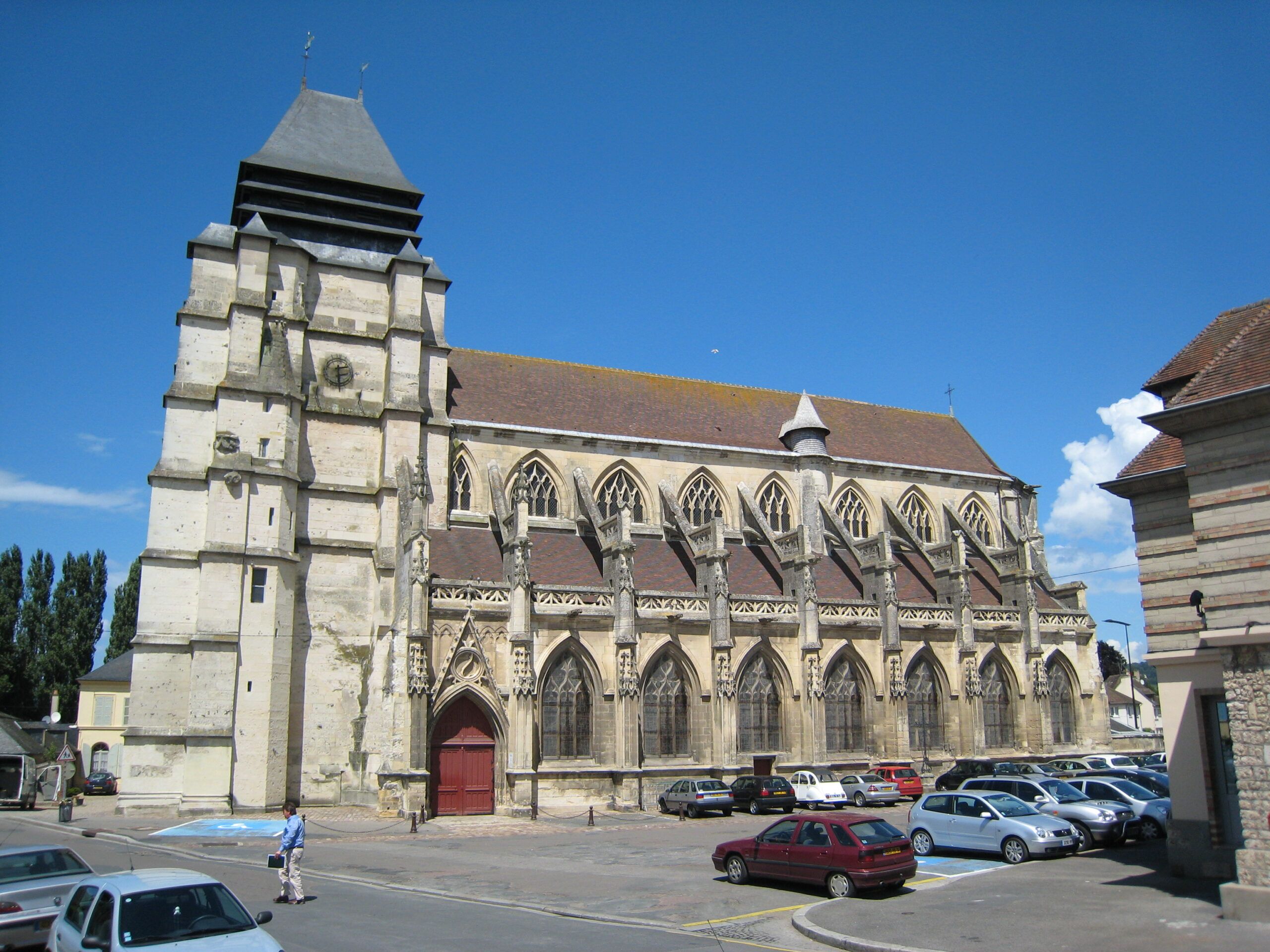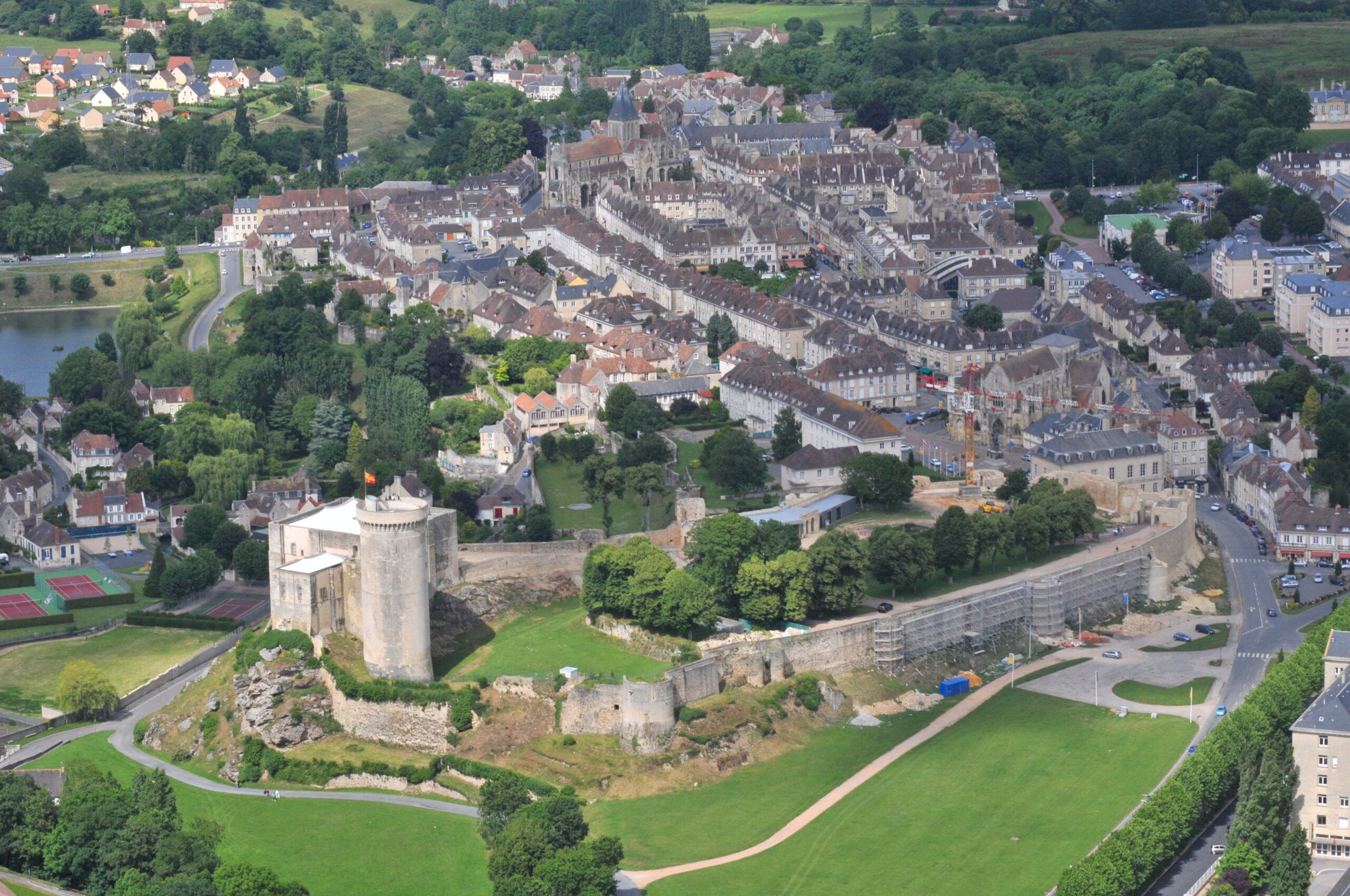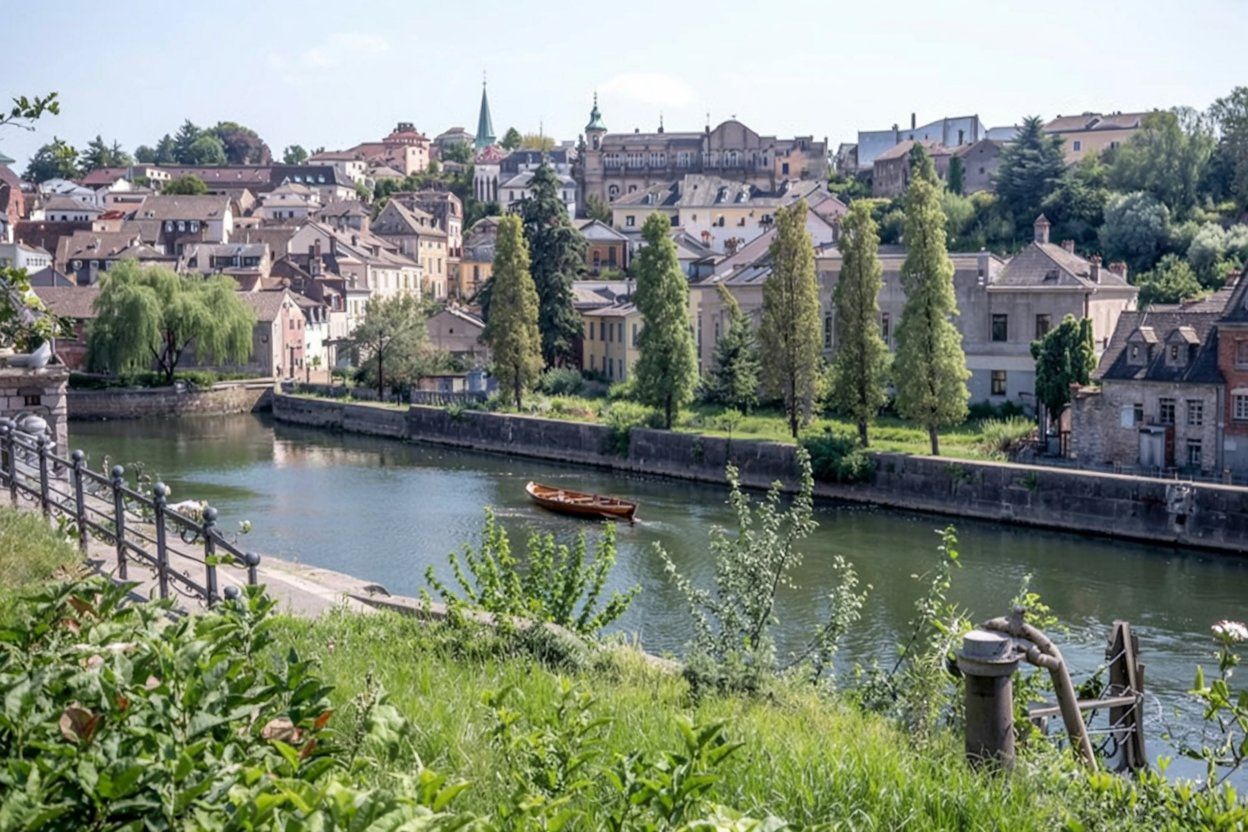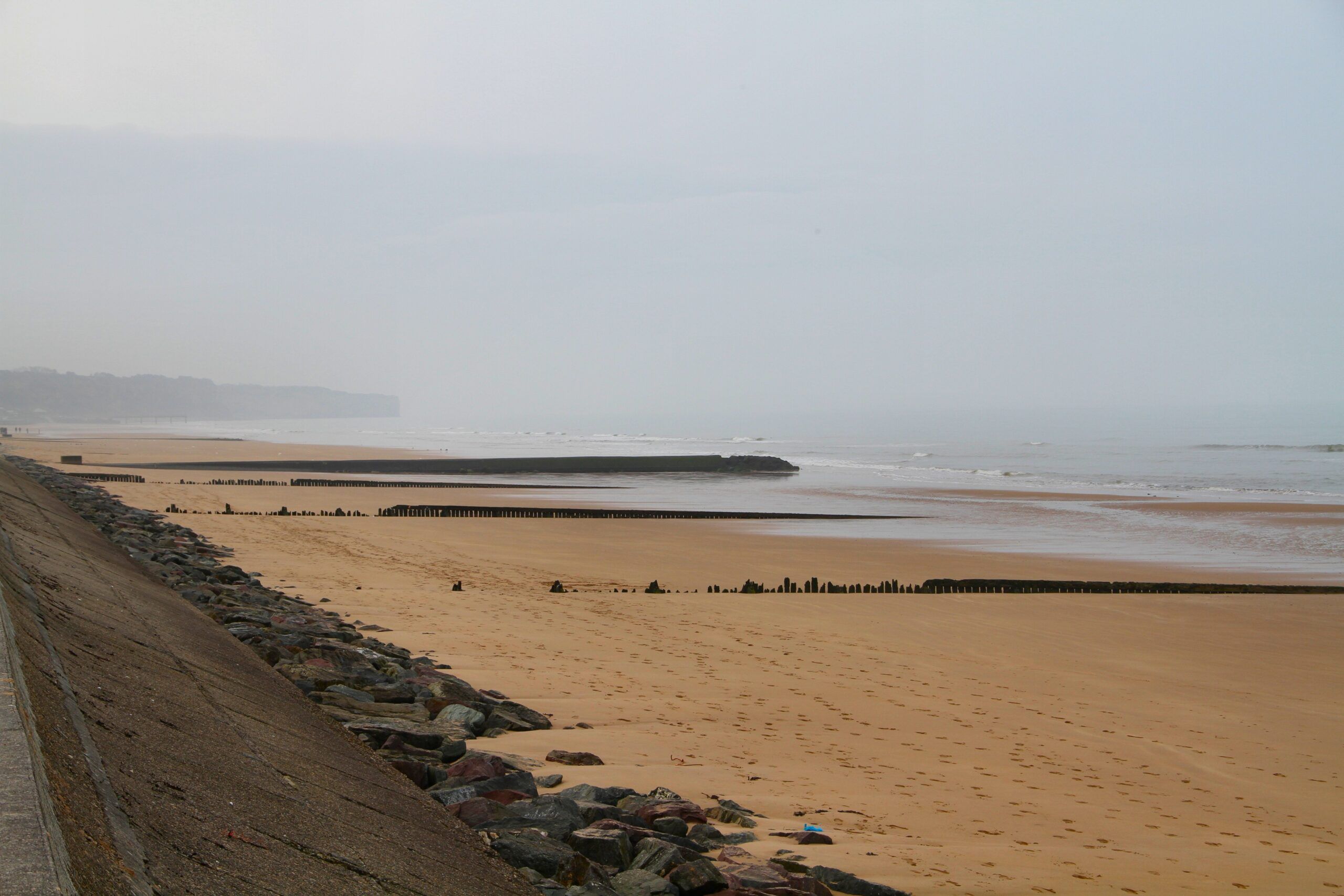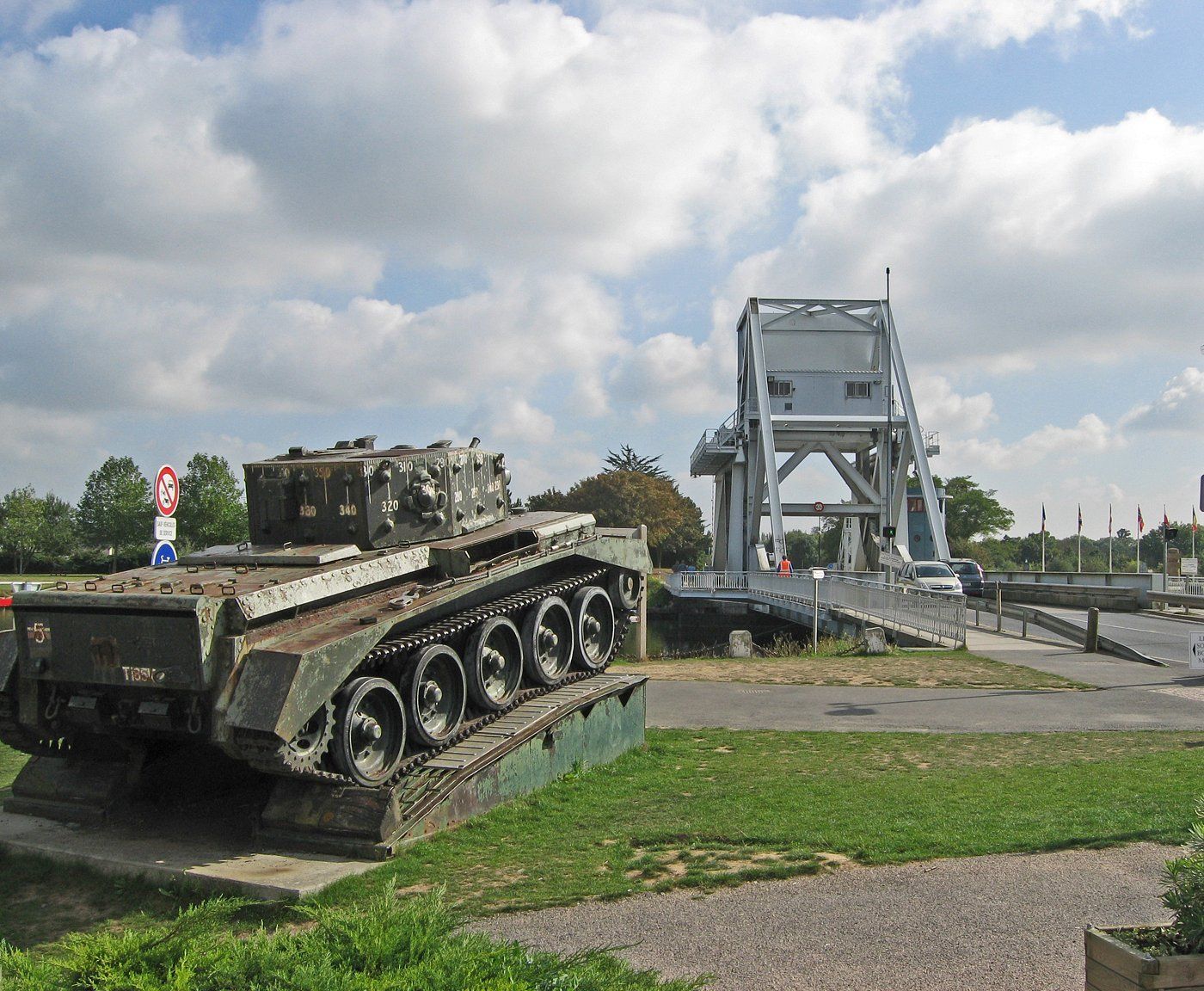Perched on the Normandy coast, Longues-sur-Mer holds a unique spot in World War II history as a German defensive stronghold during the D-Day landings. Its four massive gun emplacements still stand, letting you step inside well-preserved bunkers left almost untouched since 1944. Longues-sur-Mer is one of the most important D-Day sites you can see in a single day, with intact casemates from Hitler’s Atlantic Wall defenses.
The battery sits high on cliffs between Omaha and Gold beaches, giving you both a sense of history and some pretty spectacular coastal views. From these concrete fortifications, German forces fired at Allied ships on June 6, 1944, until British troops captured the position the next day.
Visit Recommended D-Day historic hotels and B&Bs along the invasion beaches.
These days, Longues-sur-Mer is more than just a relic of war. The village itself is peaceful and charming—a real contrast to its military past. You can wander the historic battery, stroll along scenic coastal paths, and even pop into the nearby Operation Overlord Museum without much hassle. Most attractions are free and open year-round, making this an easy add-on to any Normandy D-Day tour.
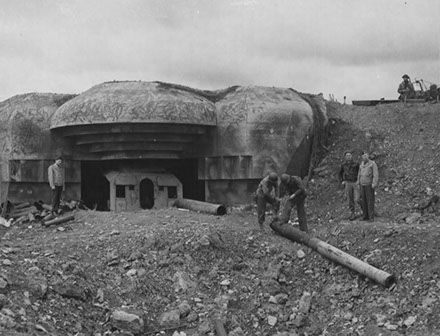
Overview of Longues-sur-Mer
Longues-sur-Mer is a small town on the Normandy coast with a big role in WWII, especially during the D-Day landings. Its spot along the coast made it a key German defensive post.
History and Location
Longues-sur-Mer sits in Calvados, between Gold and Omaha beaches, about 8 km north of Bayeux and 30 km northwest of Caen. The limestone cliffs here offer sweeping views over the English Channel.
Before WWII, Longues-sur-Mer was just a quiet farming and fishing village. The Germans picked this spot for their battery because it’s elevated and overlooks likely invasion beaches.
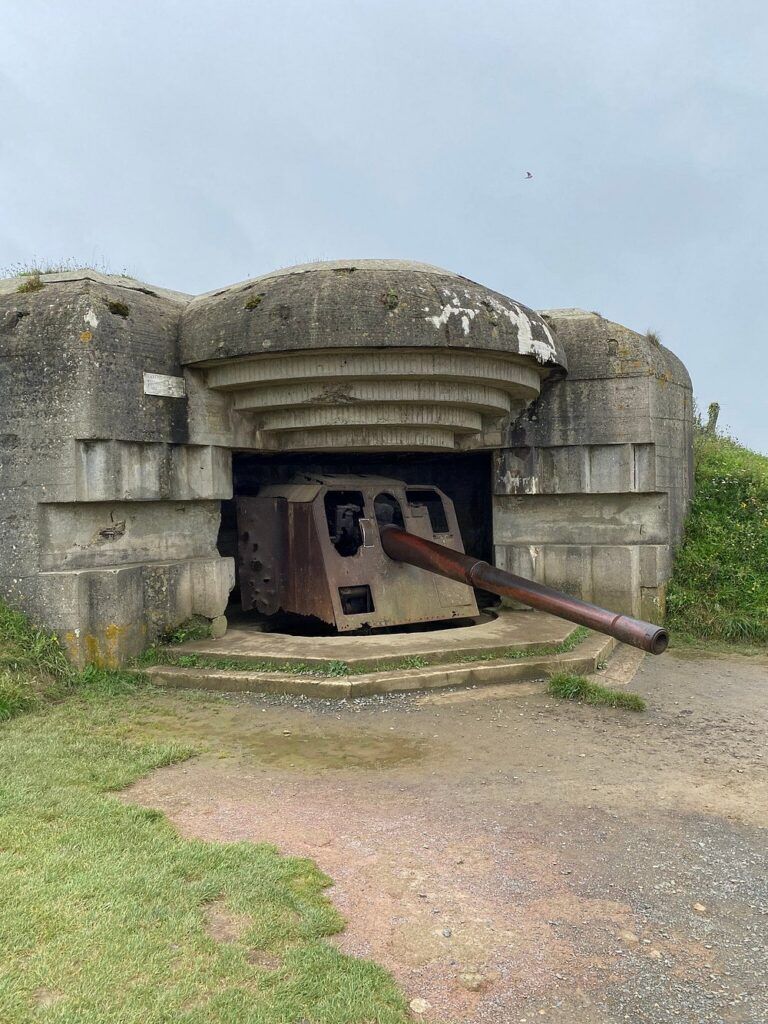
Now, fewer than 700 people live here. The countryside rolls with classic Normandy farmland—apple orchards everywhere, producing cider and calvados (the local apple brandy).
Significance in Normandy Region
Longues-sur-Mer became historically important as the site of a major German artillery battery along the Atlantic Wall. The battery played a big part in the D-Day landings on June 6, 1944.
It was one of the few batteries that managed to fire at Allied ships during those crucial first hours. Sitting between two landing sectors made it a high-priority target for the Allies.
Unlike many German bunkers that were blown up or scrapped, the four big gun casemates at Longues-sur-Mer are mostly intact.
Visiting the site gives you a real sense of the German defensive strategy along this coast. It’s a must-see for anyone wanting to understand both the German side and the Allied invasion plans.
Longues-sur-Mer German Battery
The Longues-sur-Mer battery remains one of the best-preserved German coastal defense sites on the Normandy coast. This was a crucial piece of Hitler’s Atlantic Wall and played a major role on D-Day.
Construction and Strategic Role
The Germans built the battery between 1943 and 1944, with four 150mm naval guns set in concrete casemates. Each gun could lob 88-pound shells over 12 miles out to sea.
Because it sat between Omaha and Gold beaches, this battery could target ships heading for either landing zone. The site included not just the gun bunkers, but also ammo stores, a command post, and living quarters.

The Organization Todt, using forced labor, poured the concrete—walls and roofs nearly two meters thick to survive bombing.
Surviving Artillery Emplacements
Today, you can walk through all four original casemates. They’re massive, and one still holds its original 150mm gun—something you don’t see often on the Normandy coast.
The forward observation bunker sits right on the cliff edge. German officers directed fire from here, and the view over the Channel makes it clear why they chose this spot.
Walking paths connect the structures, and info panels tell the story of the battery. The site looks much as it did in 1944, which makes the history feel real.
Impact During D-Day Landings
On June 5-6, 1944, Allied bombers attacked the battery, but the thick concrete shrugged off most of the damage. When D-Day kicked off, the battery opened fire on Allied warships.
The British cruisers HMS Ajax and HMS Argonaut traded shots with the battery for over two hours. Despite being outgunned, the Germans fired 170 rounds before the guns fell silent.
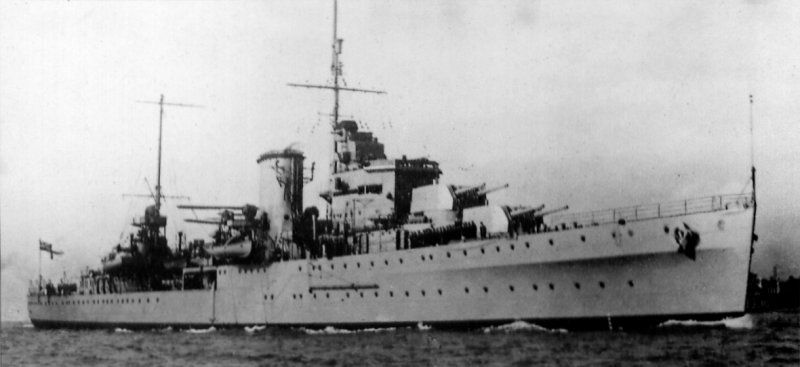
By mid-morning, the observation post was damaged, making the battery less effective. French naval commandos took the position on June 7, finding that most German soldiers had slipped away overnight. The battery’s quick neutralization shows just how overwhelming the Allied invasion force really was.
D-Day and Operation Overlord at Longues-sur-Mer
Longues-sur-Mer played a key part during the D-Day landings. The German battery here was a top target because it overlooked the invasion beaches.
Preparations and Allied Forces
The battery was built in 1943-1944 as part of the Atlantic Wall, with four 150mm naval guns in thick concrete bunkers. Those guns could hit ships up to 13 miles offshore and were a serious threat to the invasion fleet.
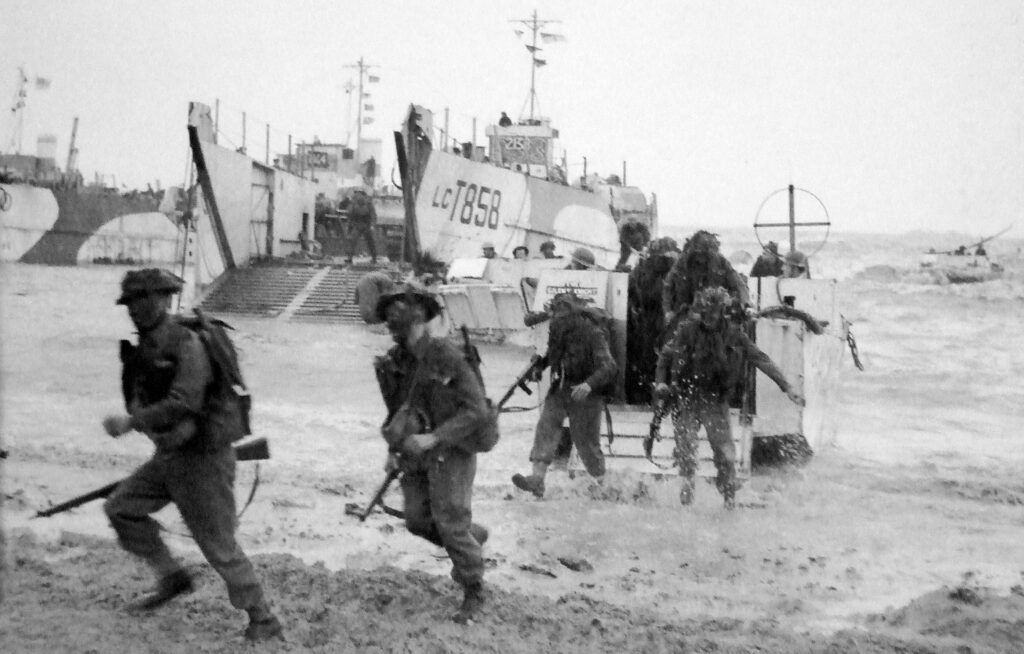
Allied recon planes photographed the battery heavily before D-Day. Bombers hit it in May 1944 to try to weaken the defenses, but the bunkers held up.
With the battery sitting right between Gold Beach (British) and Omaha Beach (American), the Allies knew they had to silence it quickly.
Battle Events on June 6, 1944
The fighting at Longues-sur-Mer started around 5:30 AM. Allied warships, including the French cruiser Georges Leygues and British HMS Ajax, shelled the battery. The duel lasted for hours.
Even under fire, the German gunners managed to shoot back—about 170 rounds in all—before the battery was silenced. One of the four casemates took a direct hit and was destroyed.
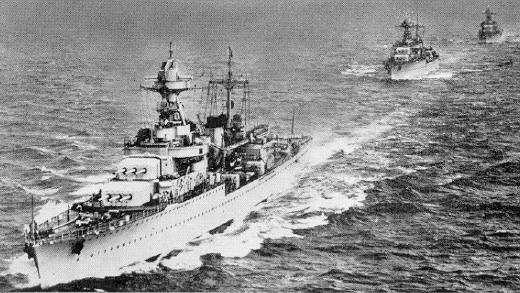
By mid-morning, the battery’s firepower was mostly gone. British troops from the 231st Infantry Brigade landed at Gold Beach and pushed inland, reaching Longues-sur-Mer by evening.
The 120 German defenders surrendered when the British arrived, removing a big threat to the landings.
Aftermath and the Path to Liberation
Capturing the battery was a big win for the Allies. It eliminated a dangerous artillery position that could have caused real trouble for landing troops and ships.
Afterward, British forces used the battery as an observation post to watch over the artificial Mulberry harbor at Arromanches.
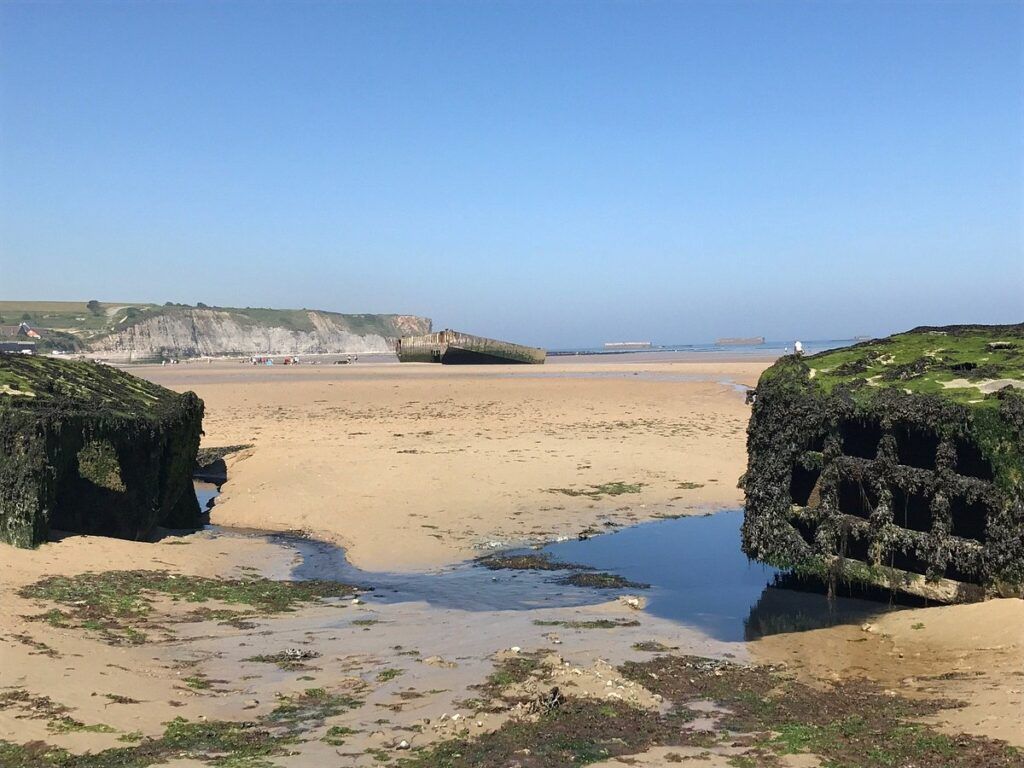
The village itself was liberated during the advance. Most locals had been evacuated by the Germans before D-Day, so civilian casualties were low.
In the days after D-Day, the area became part of the growing Allied beachhead. The road through Longues-sur-Mer turned into a busy supply route toward Bayeux, which the Allies liberated on June 7th.
Visiting Longues-sur-Mer Today
Longues-sur-Mer gives visitors a rare look at D-Day history with its impressive battery site. The location combines historical importance and gorgeous coastal scenery. It’s not hard to see why this spot mattered so much on D-Day.
Stay steps from Omaha Beach and historic landmarks. Best rates on local accommodations.
Site Entrances and Access
The battery site is open all year and free to enter. You’ll find the main entrance off the D514 coastal road between Arromanches and Port-en-Bessin.
There’s a parking lot near the bunkers. In summer, especially June through August, it’s best to arrive early or later in the day to dodge the crowds—particularly around D-Day’s anniversary.
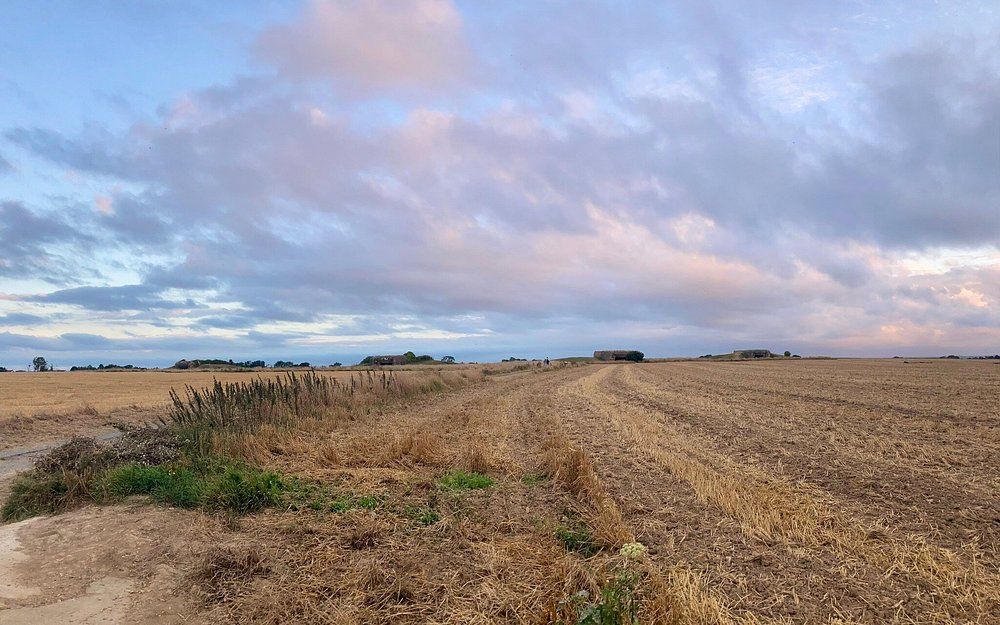
The site’s open from 8:00 AM to sunset. No tickets or reservations—just walk in and explore at your own pace. It’s perfect for self-guided tours.
If you’re relying on public transport, just know buses are pretty limited. Most people drive or join tour groups from places like Bayeux.
Visitor Facilities and Accessibility
Facilities are basic here, especially compared to bigger Normandy sites. There’s a small info kiosk near the parking lot in summer.
Public restrooms sit near the entrance. There’s no café, so pack water and snacks—especially if it’s hot out.
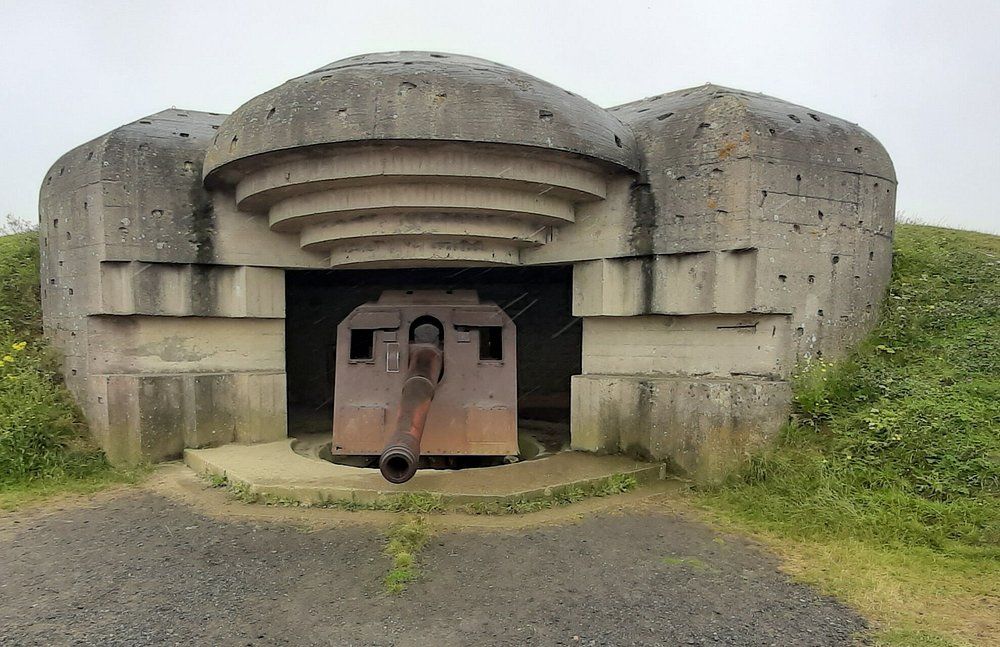
Accessibility is a bit tricky. The paths are gravel and grass, so wheelchairs and folks with mobility issues might struggle. Getting inside the bunkers means dealing with steps and tight doorways.
The coastal observation point has benches for resting. If it’s rainy or winter, the paths can get muddy—bring sturdy shoes.
Interpretive Signage and Exhibits
Panels around the site explain the battery’s role in the Atlantic Wall and on D-Day. Signs come in French, English, and German, with photos and diagrams.
Inside the main casemate, you’ll see exhibits about how the guns worked and how the bunkers were built, plus details on the British capture.
Some newer signs have QR codes linking to extra content—audio, video, and historic footage. It’s a nice touch for self-guided visits.
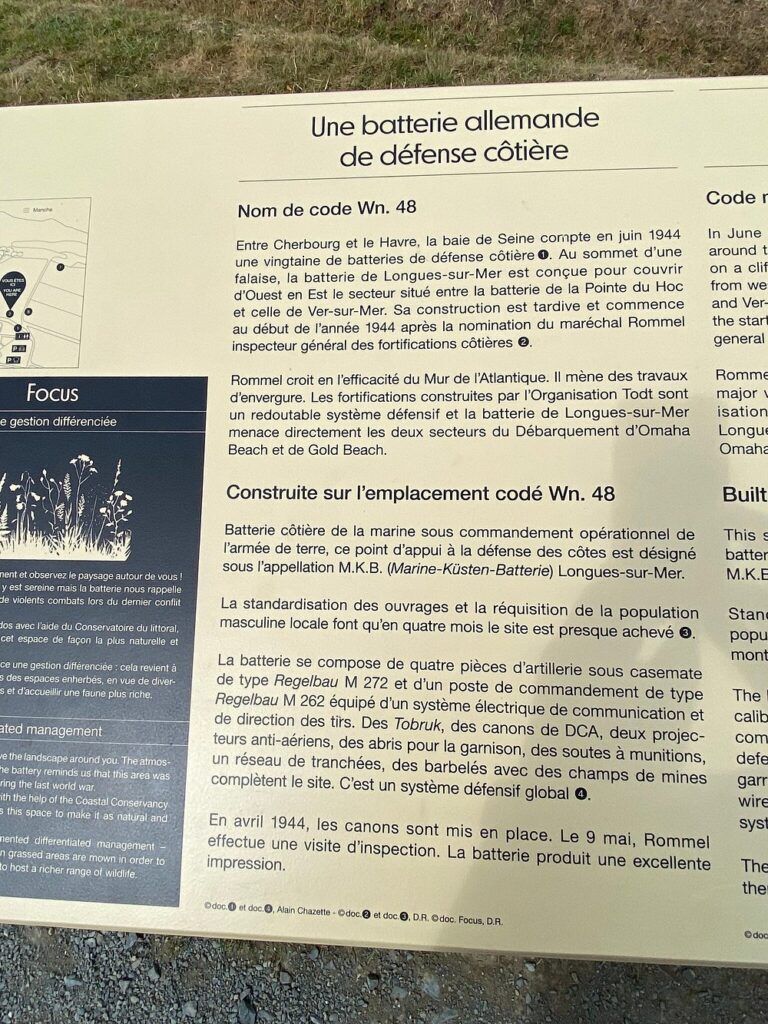
The Tourist Office in Bayeux has guidebooks and maps focused on Longues-sur-Mer, offering more detail than the on-site info.
If you want to go deeper, download an audio guide app before you visit. These walk you through the site with narration and even sound effects from the battle.
Guided and Self-Guided Tours
There are plenty of ways to explore Longues-sur-Mer. You can join a professional guided tour, hire a local expert, or just wander on your own with some handy resources.
Official Guided Tours
Several companies include Longues-sur-Mer in their D-Day battlefield tours. Tours usually last 4–8 hours and often start in Bayeux. Prices range from $60 per person to over $1,000 for private groups (up to 4 people).
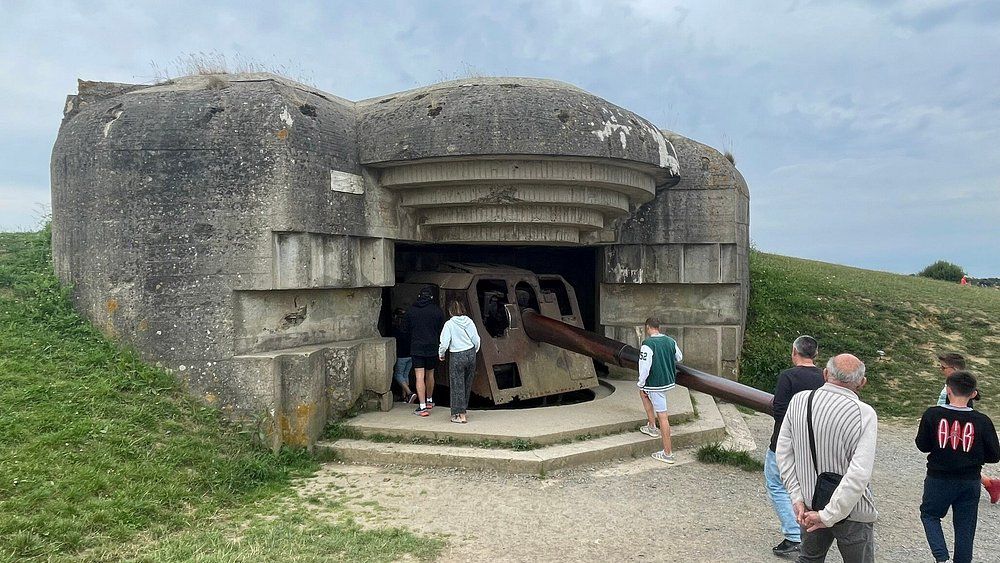
Most official tours:
- Feature knowledgeable guides who know their WW2 history
- Visit several D-Day sites—batteries, beaches, cemeteries
- Provide transport in comfy vans or sometimes even old WW2 jeeps
- Offer English-speaking guides
If you want a thorough experience without worrying about logistics, these tours are a safe bet. Book ahead if you’re coming in summer.
Recommended D-Day Tours:
- American D-Day Sites in Normandy Full-Day Tour
- American D-Day Sites in Normandy Half-Day Tour
- Half-Day Normandy WWII Sidecar Tour
- Full-Day US Battlefields of Normandy Tour
Personal Guides and Local Insights
Personal guides offer a more flexible, tailored experience. Locals like Patrick (check the search results) run private tours that can be shaped around your interests and pace.
Why go personal?
- Custom itineraries just for you
- Deeper stories and context
- Flexible timing and stops
- Often include hidden spots and viewpoints
Expect to pay €200–350 per day, depending on group size and length. Guides can meet you wherever works—hotel or right at the battery.
Recommended Private D-Day Tours:
- From Rouen: Normandy D-Day Beaches Private Full-Day Tour
- Private Tour: Rouen, Bayeux, and Falaise Day Trip from Bayeux
- Normandy WWII Private Half-day Sidecar Tour From Bayeux
Self-Guided Tour Resources
If you like doing your own thing, Longues-sur-Mer is easy for self-guided visits. The battery site has info panels in several languages at each bunker.
Useful resources for self-guided tours:
- Free audio guides from Normandy Tourism
- Mobile apps for D-Day sites with GPS directions
- Printed guidebooks at the Bayeux Tourist Office
- Online maps with key points marked
The battery is open daily and free. Give yourself 1–2 hours to really see everything. Wear good shoes—the ground’s uneven in spots.
Find the perfect base for exploring Utah Beach, Pointe du Hoc, and beyond.
Nearby D-Day and World War II Sites
Within a short drive, you’ll find some of the most significant D-Day beaches and memorials where the Allies fought to liberate Europe. Each one brings a different angle on this massive operation.
Arromanches and Mulberry Harbour
Arromanches-les-Bains, just 6 km east, holds the remains of the Mulberry B artificial harbor. You can still spot huge concrete blocks and metal platforms in the bay—reminders of the temporary port Allied engineers built after D-Day.
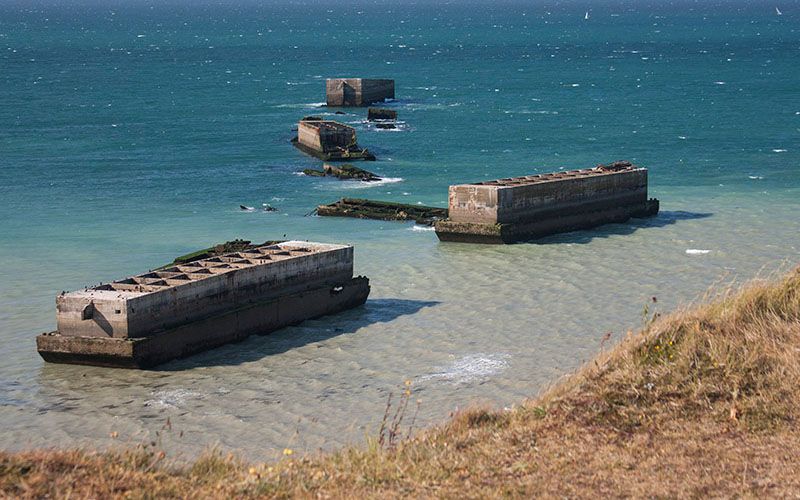
The 360° Cinema on the cliffs offers sweeping views and dramatic archive footage from the landings. For a closer look, the D-Day Museum (Musée du Débarquement) in town uses models and displays to show how the harbor worked.
The town itself is full of cafés and shops along the seafront—a nice place to unwind after soaking up all that history.
Omaha Beach and Normandy American Cemetery
About 25 minutes west, Omaha Beach saw some of the worst fighting on June 6, 1944. Today, it’s a peaceful stretch of sand at Colleville-sur-Mer.
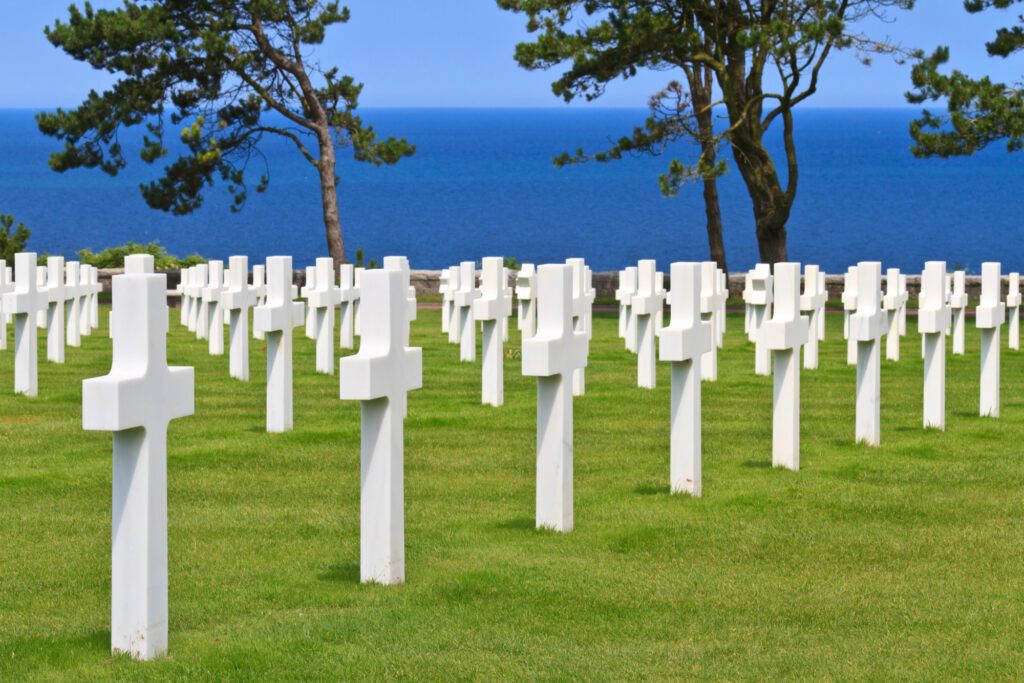
The Normandy American Cemetery overlooks the beach, with nearly 9,400 American graves. The rows of white crosses and Stars of David are a powerful sight. The Walls of the Missing list about 1,600 names of those never found.
The visitor center tells personal stories and shows artifacts from the battle. If you want a quieter experience, try visiting early or late in the day.
Pointe du Hoc and Utah Beach
Pointe du Hoc sits on high cliffs between Omaha and Utah beaches, still marked by shell craters and battered bunkers. U.S. Army Rangers famously scaled these cliffs in a daring assault.
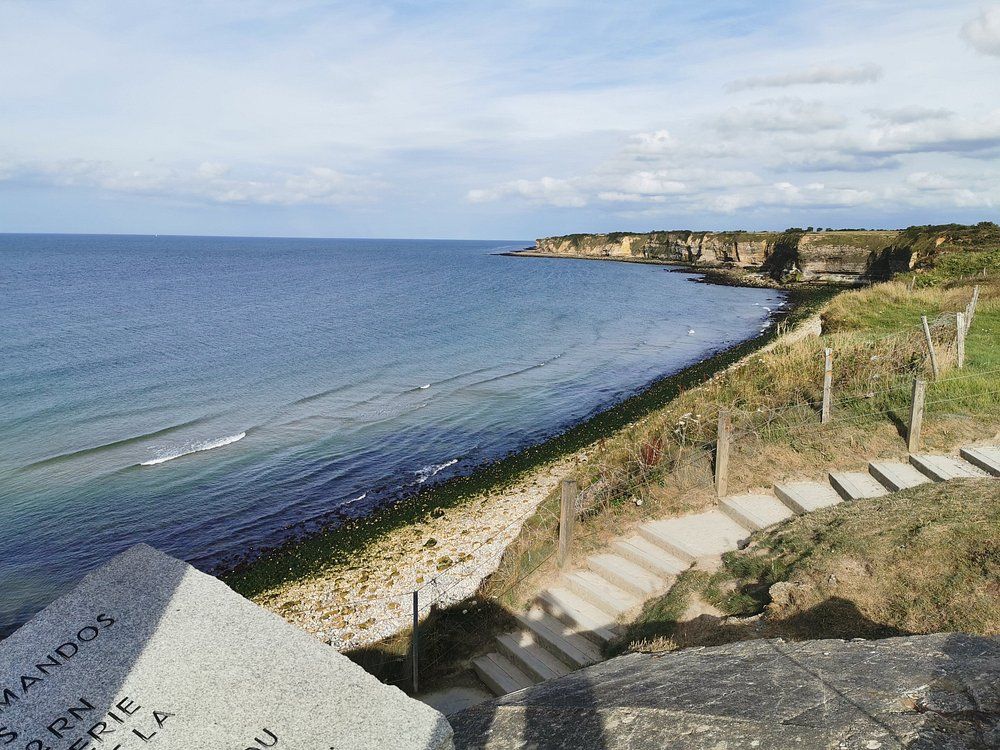
You can walk among the bunkers and see info panels explaining why this spot mattered so much.
Utah Beach, the westernmost landing, saw fewer casualties. The Utah Beach Museum displays a B-26 bomber, landing craft, and personal items from the soldiers. The museum covers both military planning and stories from locals and troops.
Gold Beach and Juno Beach
Gold Beach, where British troops landed, stretches from La Rivière to Ver-sur-Mer. Key stops include the America-Gold Beach Museum and the British Normandy Memorial, which lists all 22,442 British service members who died during the campaign.
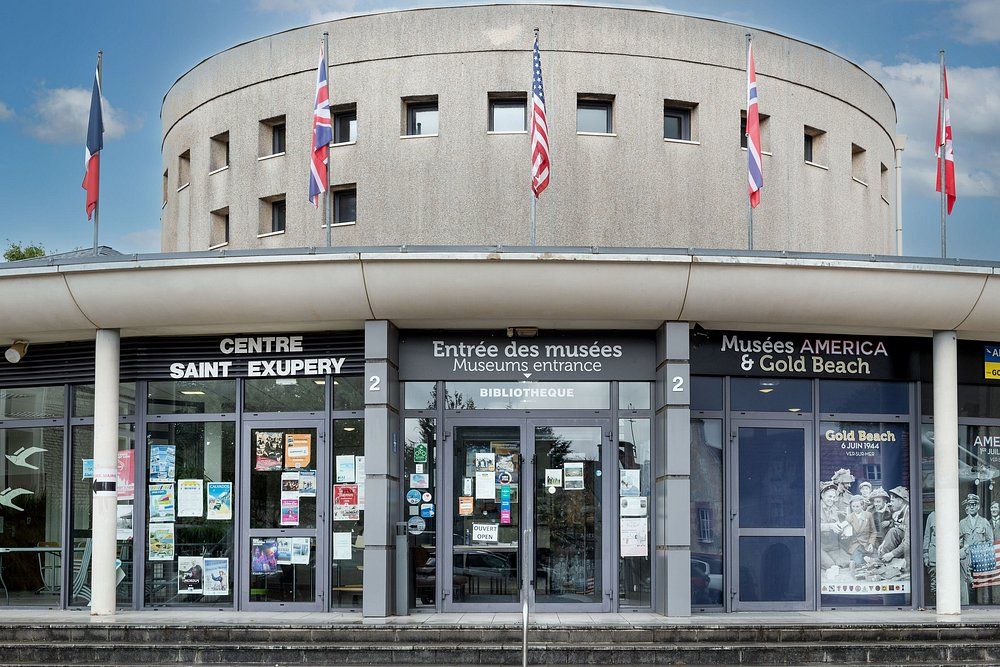
Juno Beach, the Canadian landing area, sits between Gold and Sword beaches. The Juno Beach Centre in Courseulles-sur-Mer is Canada’s D-Day museum, with exhibits on both the military action and the home front.
Both beaches have preserved bunkers and memorials. The seaside towns here are great for a lunch break—fresh seafood is a local highlight.
Museums and Memorials in the Region
Normandy has a wealth of museums and memorials that help you understand D-Day and the local history. These places use artifacts, stories, and interactive displays to bring the past to life.
Find comfortable stays within moments of historic battlegrounds
D-Day Museum and Mulberry Harbour Museum
The D-Day Museum in Arromanches tells the story of the artificial harbor built by the Allies. You can see the remaining concrete caissons out in the water from the museum’s windows. There’s a detailed scale model of the harbor and a 360° cinema film mixing archive footage with modern views.
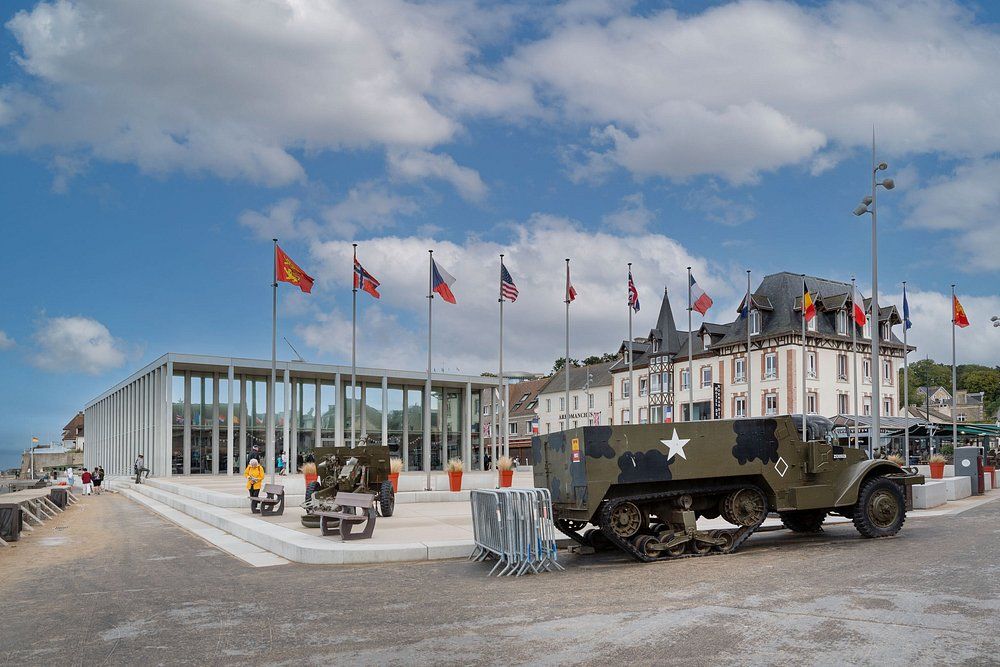
Try to visit early in the morning to beat the crowds, especially in summer. You’ll probably spend about 90 minutes here.
Entry is €8.50 for adults, with discounts for kids and seniors. The museum is open daily from 9:30 AM to 6:00 PM in peak season.
Caen Memorial Museum
The Caen Memorial Museum opened in 1988 and is one of France’s most comprehensive WWII museums. It’s about 40 minutes from Longues-sur-Mer and covers not just D-Day, but the whole war and the Battle of Normandy.
The museum uses films, artifacts, and documents to tell the story. There’s even a new section on the Cold War and peace efforts.
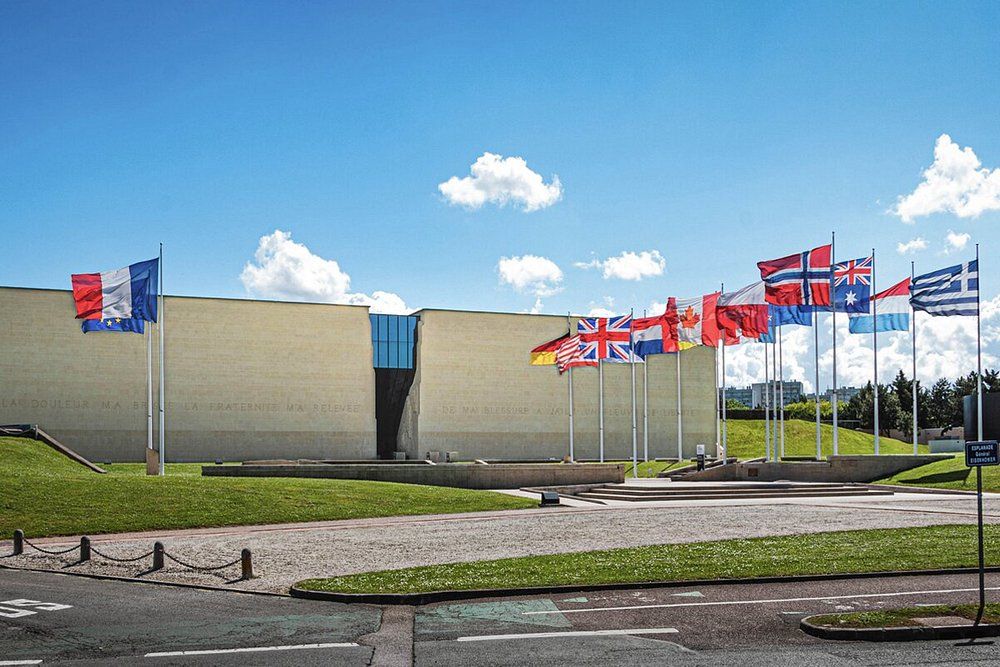
Give yourself at least 3–4 hours to see everything. All the main displays are in French and English.
Tickets cost €20 for adults. If you’re hitting several sites, check out the combined ticket option. The cafeteria’s not bad for a quick lunch, especially if you’re there all day.
Juno Beach Centre
The Juno Beach Centre in Courseulles-sur-Mer honors the Canadian role in D-Day. Opened in 2003, it covers Canada’s military and civilian experiences during WWII.
Interactive exhibits show why Canadian forces were so crucial. You can walk the actual landing beach and see preserved German bunkers.
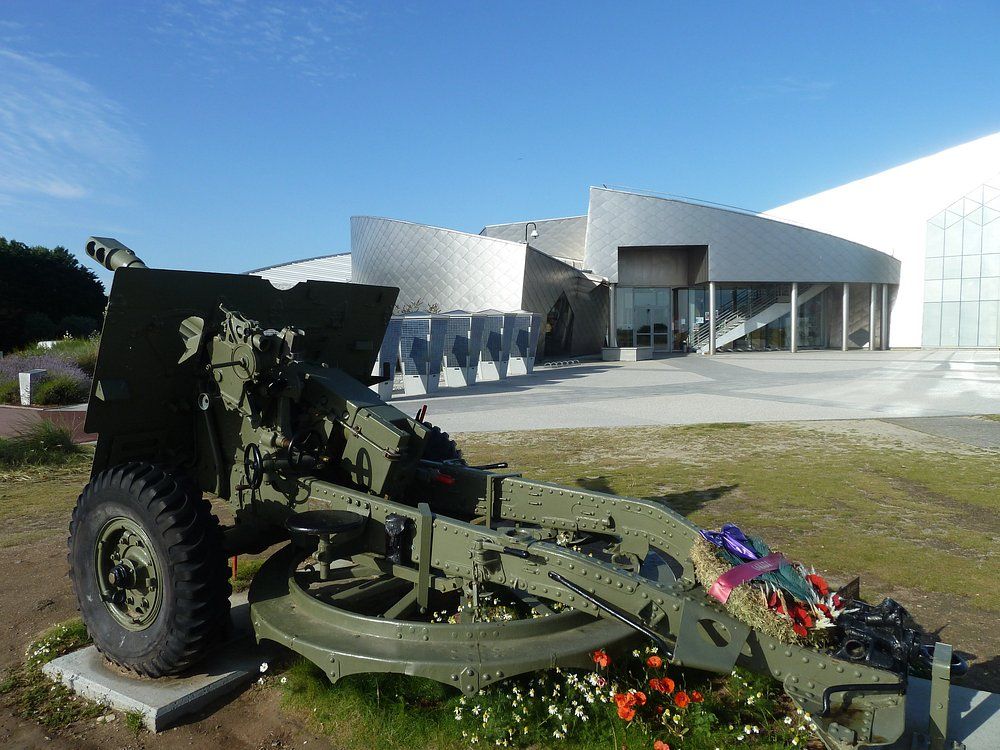
Guided tours of Juno Park include the beach and bunkers—takes about 45 minutes and is worth the extra fee.
The museum is fully bilingual. Plan for about 2 hours. Adult tickets are €8, with family passes available. Open daily 10:00 AM–6:00 PM from April through October.
Bayeux Tapestry and Memorials
While not directly tied to D-Day, the Bayeux Tapestry Museum displays the famous 11th-century embroidery showing William the Conqueror’s invasion of England. It’s 70 meters long and offers some fun context on invasion tactics.
Nearby, you’ll find the Bayeux War Cemetery, the largest British WWII cemetery in France, with over 4,600 Commonwealth graves.
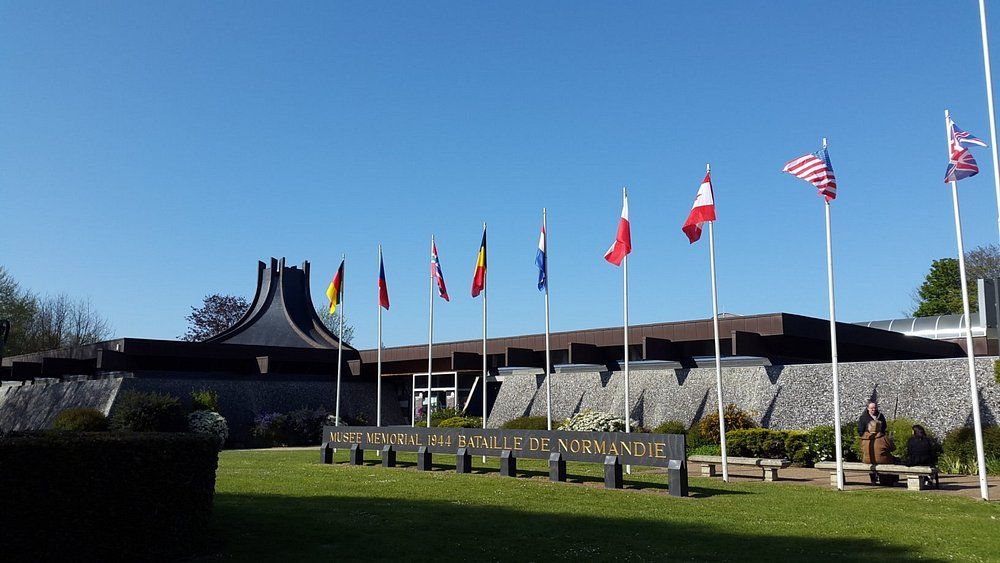
The Memorial Museum of the Battle of Normandy in Bayeux has exhibits on the 1944 campaign.
Combo tickets for the tapestry and the battle museum save you a bit. Bayeux itself survived WWII mostly unscathed, so you get a glimpse of pre-war Normandy architecture while you’re there.
Exploring Normandy Towns and Villages
Normandy is packed with towns and villages full of history and character. Many played key roles during WWII and now welcome visitors with their preserved buildings, museums, and memorials.
Bayeux and its Historical Significance
Bayeux was the first major town liberated after D-Day and somehow escaped bombing, keeping its medieval streets and architecture intact.
The Bayeux Cathedral dominates the center, with its Norman-Gothic design from the 11th century. The Bayeux Tapestry Museum is here too, showing off the 70-meter embroidery of William the Conqueror’s invasion.
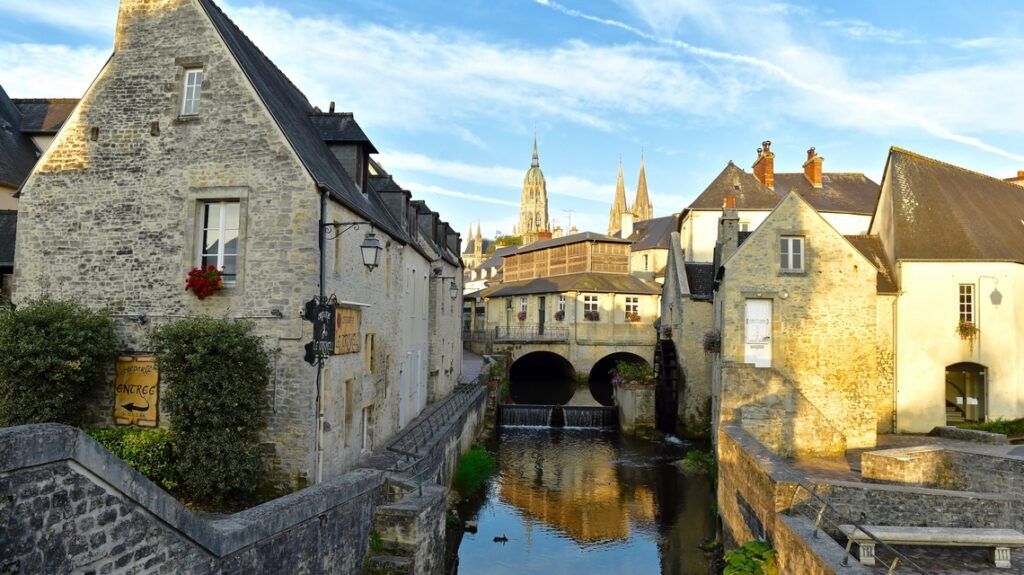
The Museum of the Battle of Normandy has a solid collection—vehicles, weapons, and first-hand accounts from soldiers and locals.
Bayeux is a great base for exploring the beaches—right between Omaha and Gold. There are plenty of hotels, restaurants, and tour companies to help you get to the D-Day sites.
Caen, Cherbourg, and Carentan
Caen took heavy bombing during the Normandy campaign. The Caen Memorial Museum covers WWII, D-Day, and the Cold War, with exhibits that really help you grasp the bigger picture.
Cherbourg, with its deep harbor, was a major German stronghold and Allied target. Now you can visit La Cité de la Mer, a maritime museum in the old terminal.

Carentan was a crossroads between Utah and Omaha beaches and saw fierce fighting (fans of “Band of Brothers” will recognize it). The D-Day Experience museum nearby even has a C-47 flight simulator to let you feel what it was like for the paratroopers.
Each town offers a different perspective on the war and has everything you need for a Normandy trip.
Sainte-Mère-Église and Sainte-Marie-du-Mont
Sainte-Mère-Église is famous for paratrooper John Steele, whose chute caught on the church tower during D-Day. There’s still a dummy paratrooper hanging there as a tribute.
The Airborne Museum tells the story of the American airborne operations with original aircraft and gear. Four buildings cover different aspects, and there’s even a C-47 you can walk through.
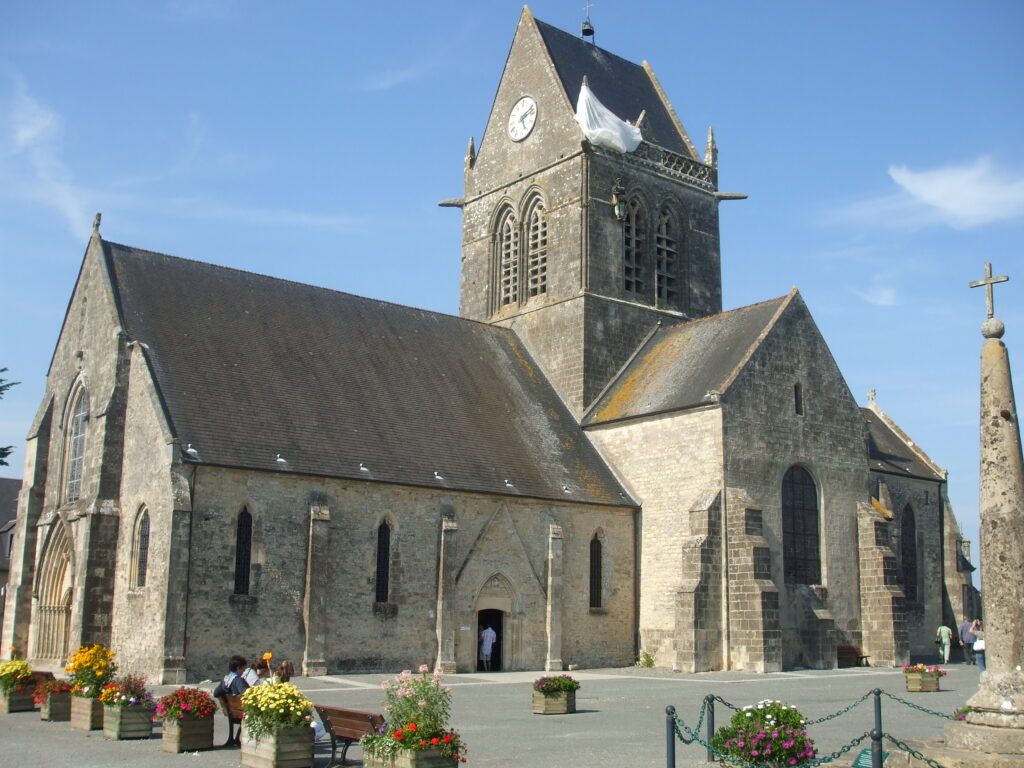
Sainte-Marie-du-Mont was the first French village liberated by American troops landing at Utah Beach. The church still has bullet holes from the fighting.
The Utah Beach Museum just outside town has artifacts, vehicles, and a rare B-26 bomber. Both villages keep their Norman charm, with stone houses and cozy cafés where you can take a break.
Falaise, Montormel, and Courseulles-sur-Mer
Falaise is where the Allies closed the “Falaise Pocket,” trapping German troops in August 1944. William the Conqueror was born here, and his medieval castle still overlooks the town. The August 1944 Memorial Museum covers this final battle with interactive displays.
Montormel’s Memorial Museum overlooks the “Corridor of Death,” where German forces tried to escape. The terrace gives you a sweeping view of the battlefield, and the exhibits explain the last phase of the campaign.
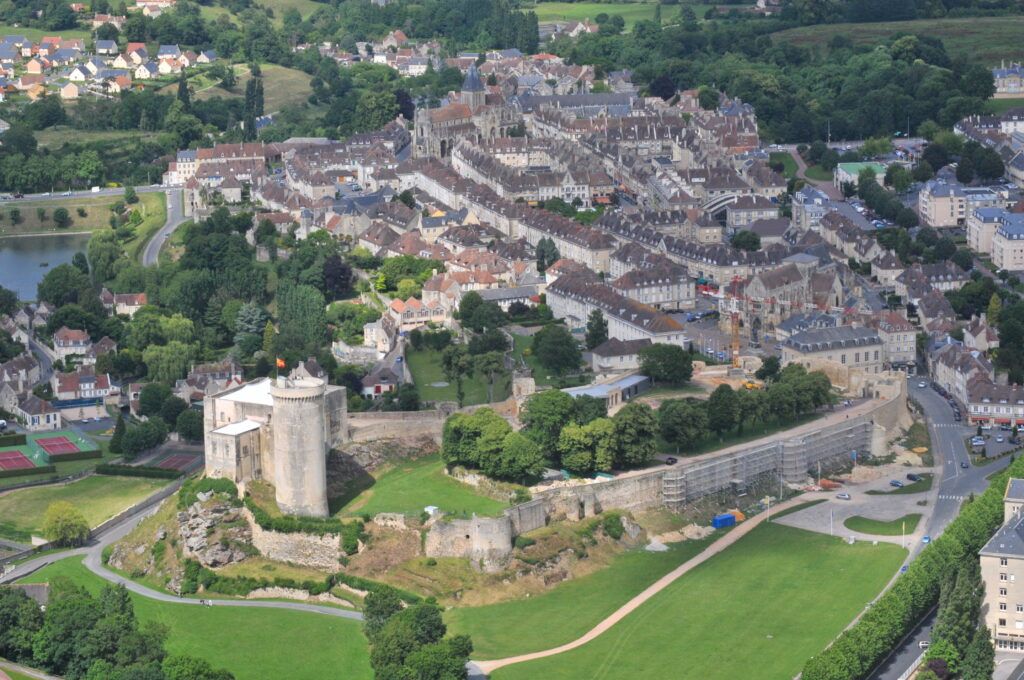
Courseulles-sur-Mer sits on Juno Beach, where Canadians landed. The Juno Beach Centre tells their story with artifacts and multimedia. The town itself is lively, with a harbor, seafood restaurants, and beaches.
These smaller spots help round out the story of Normandy and highlight the Canadian part in the landings.
Travel Tips and Transportation
Getting to Longues-sur-Mer and seeing the region takes some planning. The right mode of transport can make your trip smoother and let you see more.
How to Reach Longues-sur-Mer
Longues-sur-Mer is about 8 km north of Bayeux and 30 km from Caen. Closest airports are Caen-Carpiquet (40 minutes by car) and Paris Charles de Gaulle (3 hours).
From Paris, catch a train to Bayeux (about 2.5 hours), then head to Longues-sur-Mer. The Paris-Cherbourg line stops at Bayeux, making it a handy starting point.
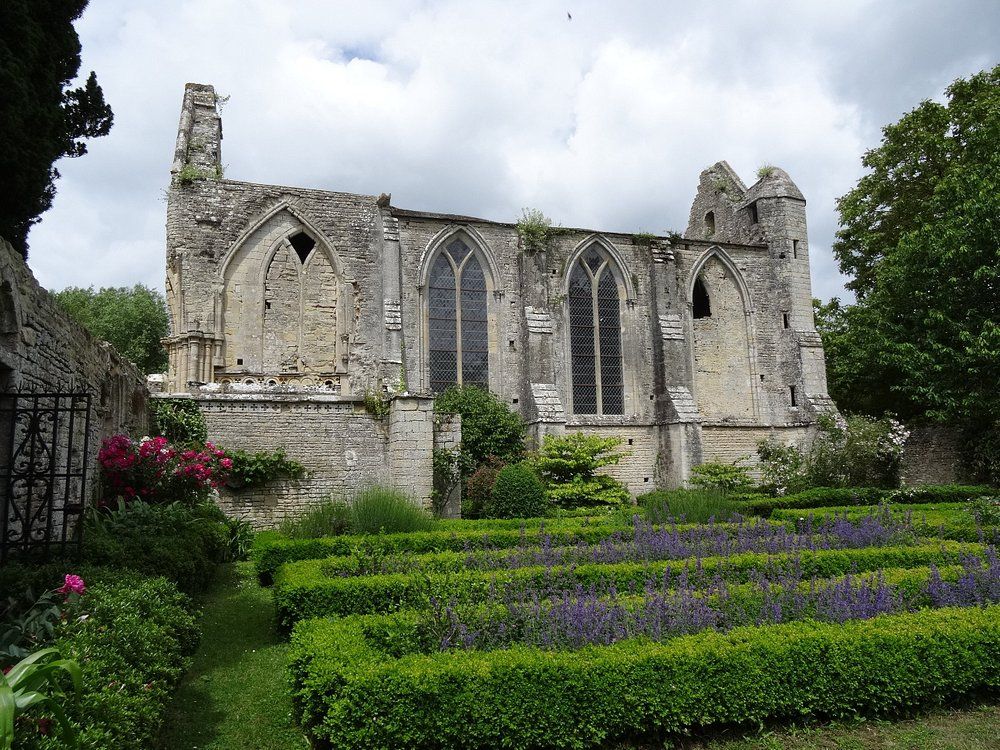
During the busy season (April–September), some tour companies run direct shuttles from Bayeux to Longues-sur-Mer and other D-Day sites. Book ahead—they fill up fast.
Most people travel to Bayeux first, then make their way to Longues-sur-Mer.
Public Transport Options
Public transport is limited but doable. There’s a bus from Bayeux to Longues-sur-Mer, though not super frequent.
Bus #70 runs from Bayeux to Port-en-Bessin, stopping near Longues-sur-Mer. It goes Monday through Saturday with 2-3 departures a day—check the latest schedule at the tourist office or online.
Taxis are available in Bayeux but can get pricey for a round trip—expect €30–50. It’s best to set a pickup time in advance.
Many guided D-Day tours from Bayeux include the battery. Prices range from €65–120 per person depending on group size and length.
Car Rentals and Cycling Routes
Renting a car gives you the most freedom. Bayeux has several rental agencies:
- Hertz (near the train station)
- Europcar (in the center)
- Avis (by the cathedral)
Daily rates start around €40–60 for a small car. Book early if you’re coming in summer.
The drive from Bayeux to Longues-sur-Mer takes about 15–20 minutes on the D6. There’s free parking at the battery.
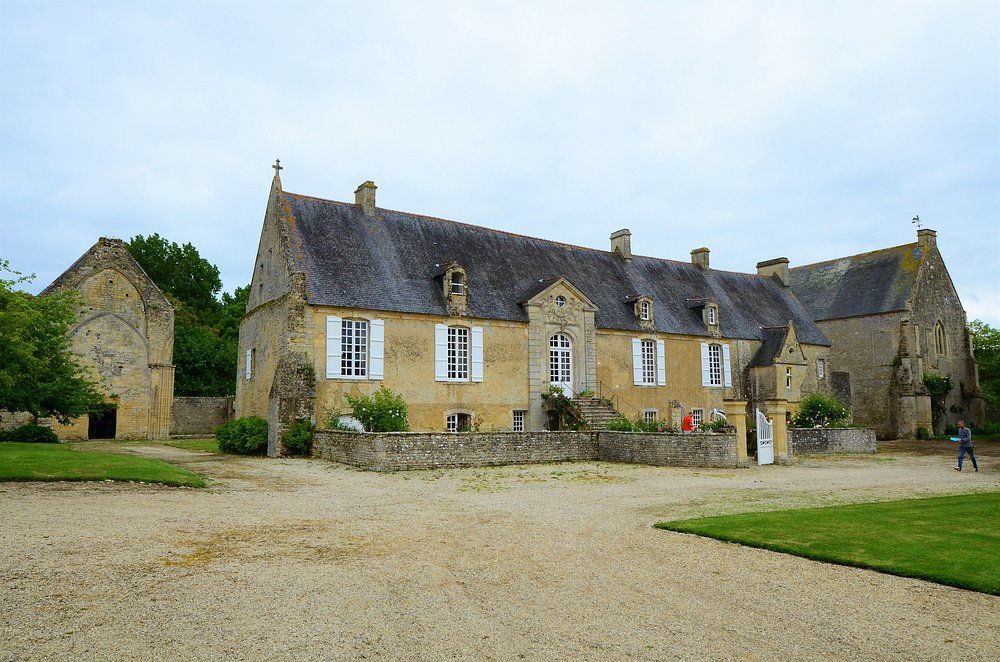
If you’re into cycling, the area is mostly flat and pleasant to ride. Bike rentals in Bayeux start at €15 a day. The 8 km route from Bayeux uses quiet country roads.
The Green Way (Voie Verte) cycling path connects several D-Day beaches and passes about 3 km south of Longues-sur-Mer. It’s a scenic option if you’re up for it.
Visitor Information and Practical Advice
Planning ahead makes your Longues-sur-Mer visit much smoother. The battery is open all year and free, so it’s a budget-friendly stop on your Normandy trip.
Best Times to Visit
The battery is open daily all year. For a quieter experience, aim for early morning (before 10am) or late afternoon (after 4pm), especially in summer.
Spring (April–June) and fall (September–October) have mild weather and fewer crowds. The week around June 6th is packed for D-Day ceremonies—expect big crowds then.
Winter visits are peaceful, but it gets cold and windy on the cliffs—dress warm. You’ll want 45–60 minutes to explore the site. Some paths are uneven, so take care if you have mobility issues.
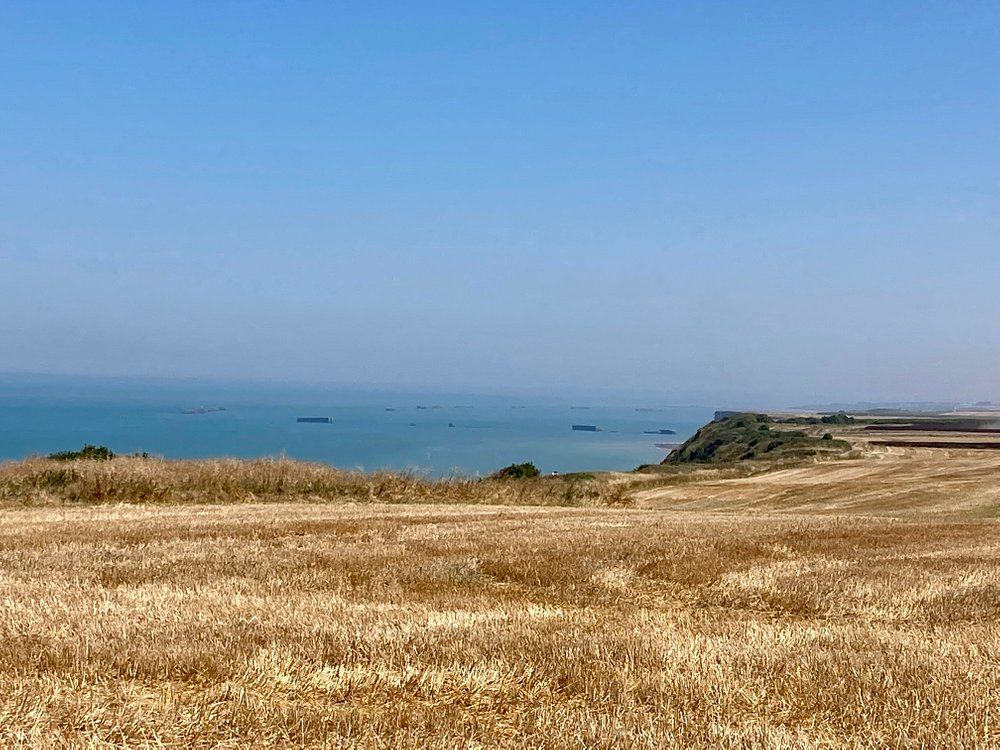
Nearby Accommodation
Bayeux (10 km away) has the widest choice of places to stay, from budget hotels to cozy B&Bs in historic buildings. Hotel Churchill and Hotel Reine Mathilde are popular and have D-Day themed décor.
See available accommodations in Bayeux.
For something more authentic, try one of the farmhouse gîtes in Port-en-Bessin (5 km) or Arromanches (8 km), many with countryside or sea views.
See available accommodations in Arromanches.
Camping is available at Camping d’Arromanches and Camping Port’Land, both within 10 km.
Book 3–6 months in advance if you’re coming in high season (May–September), especially around the D-Day anniversary in June when rooms vanish fast.
Local Dining and Services
Port-en-Bessin, just 5 km away, has great seafood—La Marine and Le Bistrot d’à Côté are favorites for fresh catch with a view of the fishing harbor.
For something quick, the D-Day Landing Museum in Arromanches has a café with sandwiches and snacks. Farm shops nearby sell local cheese, cider, and calvados.
Restrooms are available at the battery parking lot, but they’re basic. You’ll find better facilities in nearby towns.
Mobile service can be spotty at the battery, but most restaurants and hotels have free Wi-Fi. The tourist info center in Bayeux has maps, brochures, and help in several languages.
From beachfront hotels to authentic French countryside stays. No booking fees.

